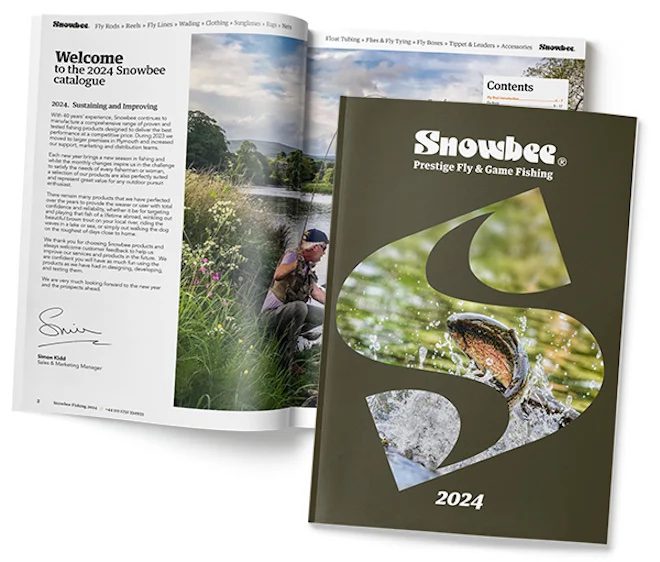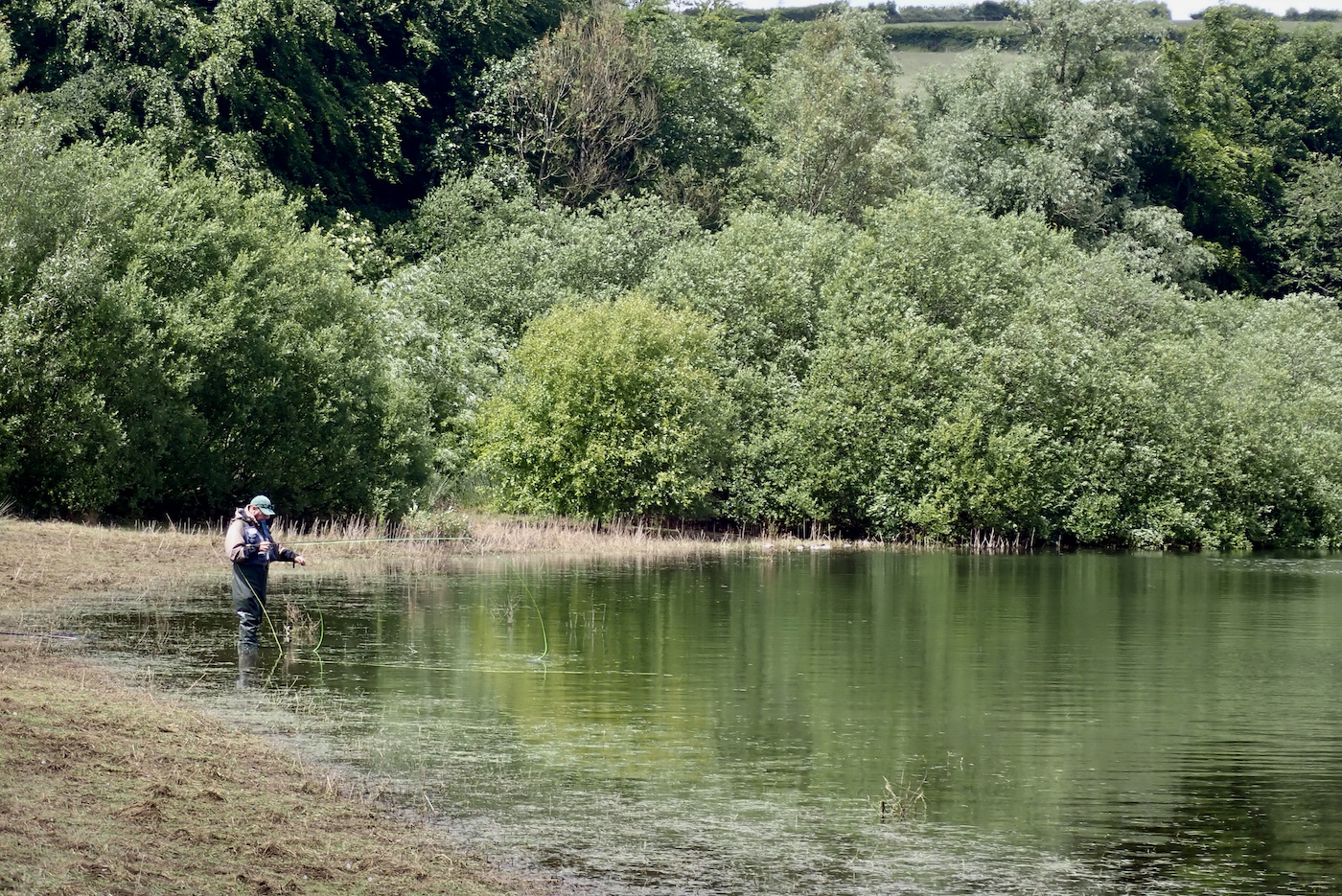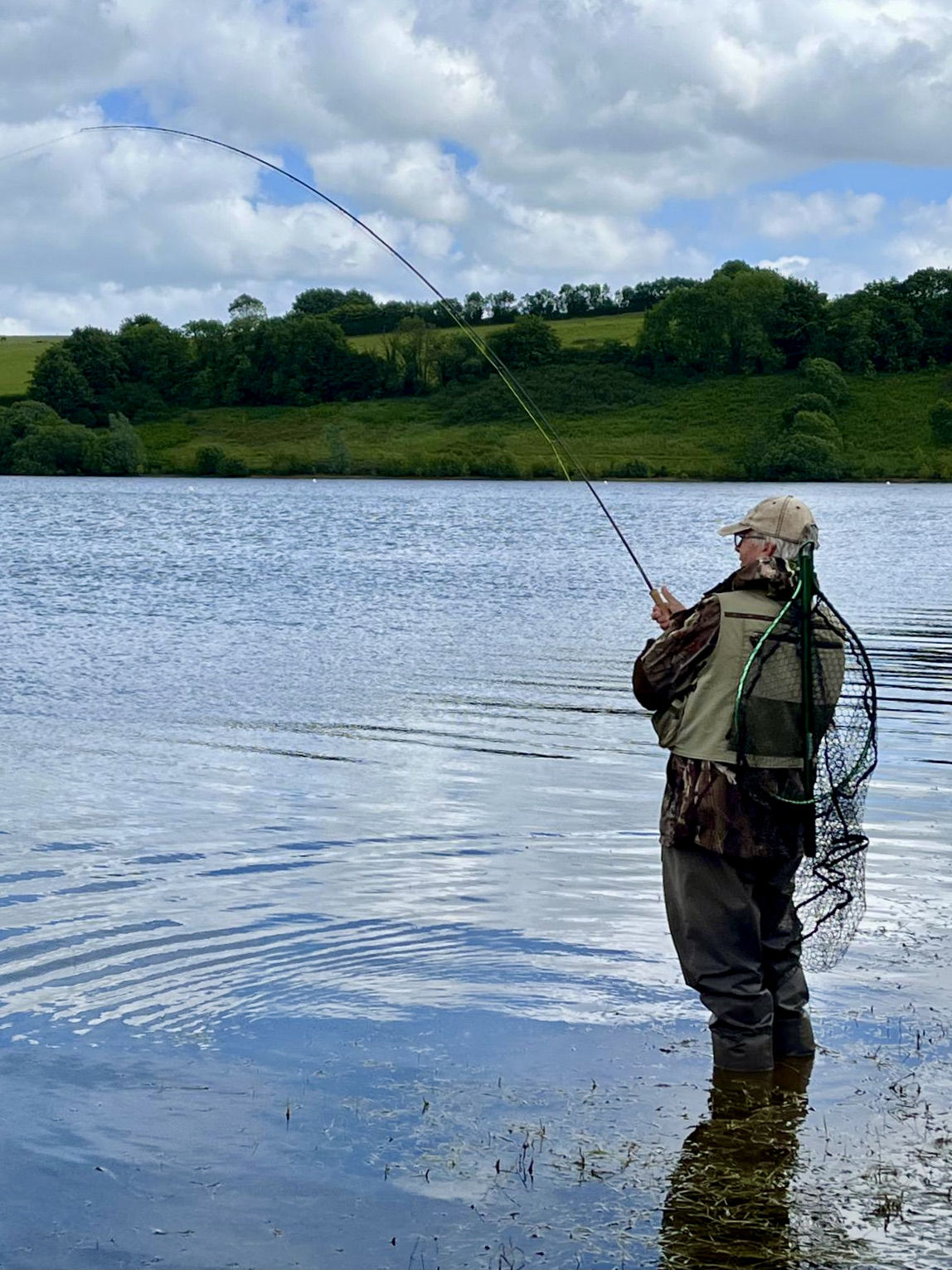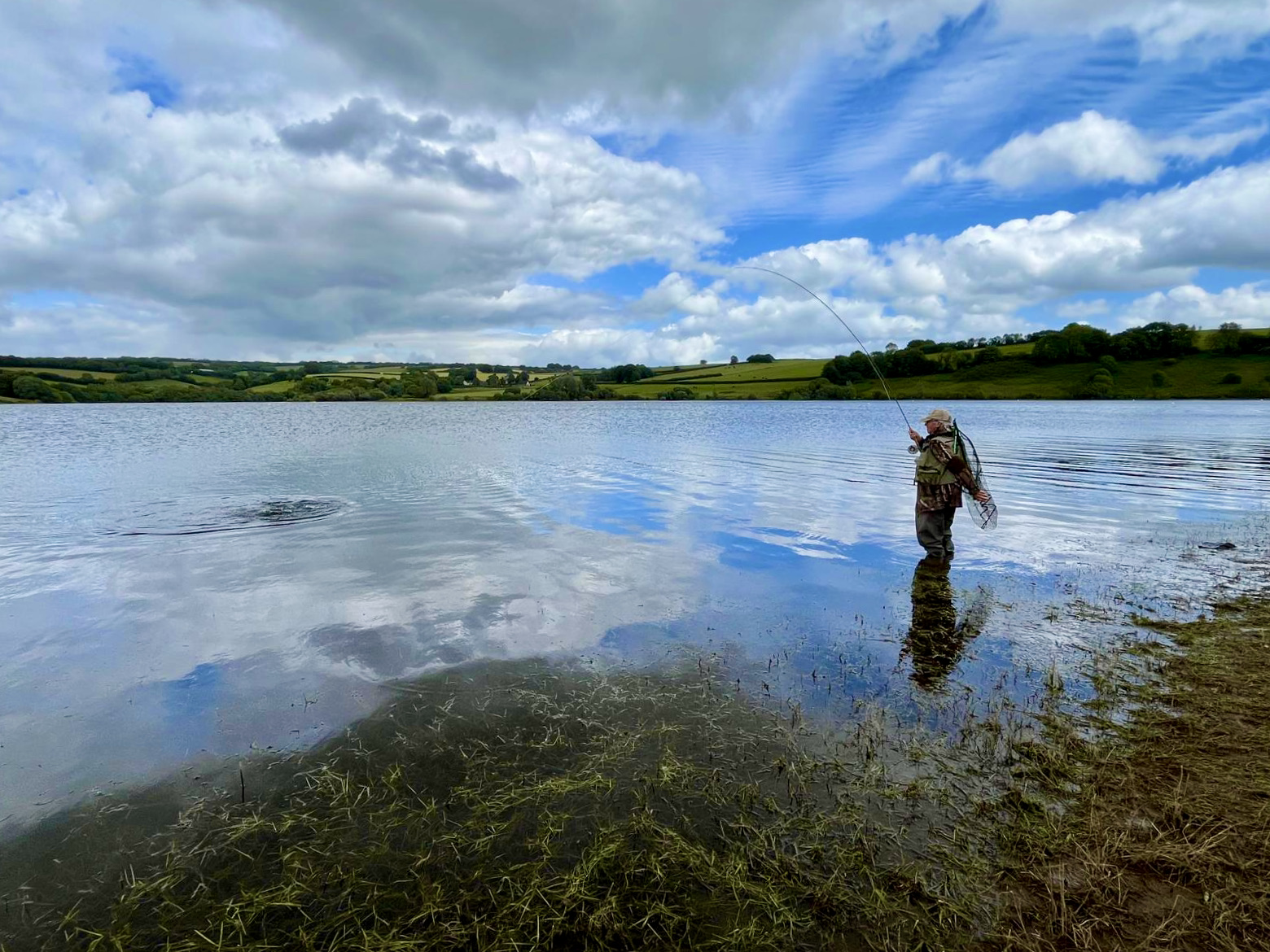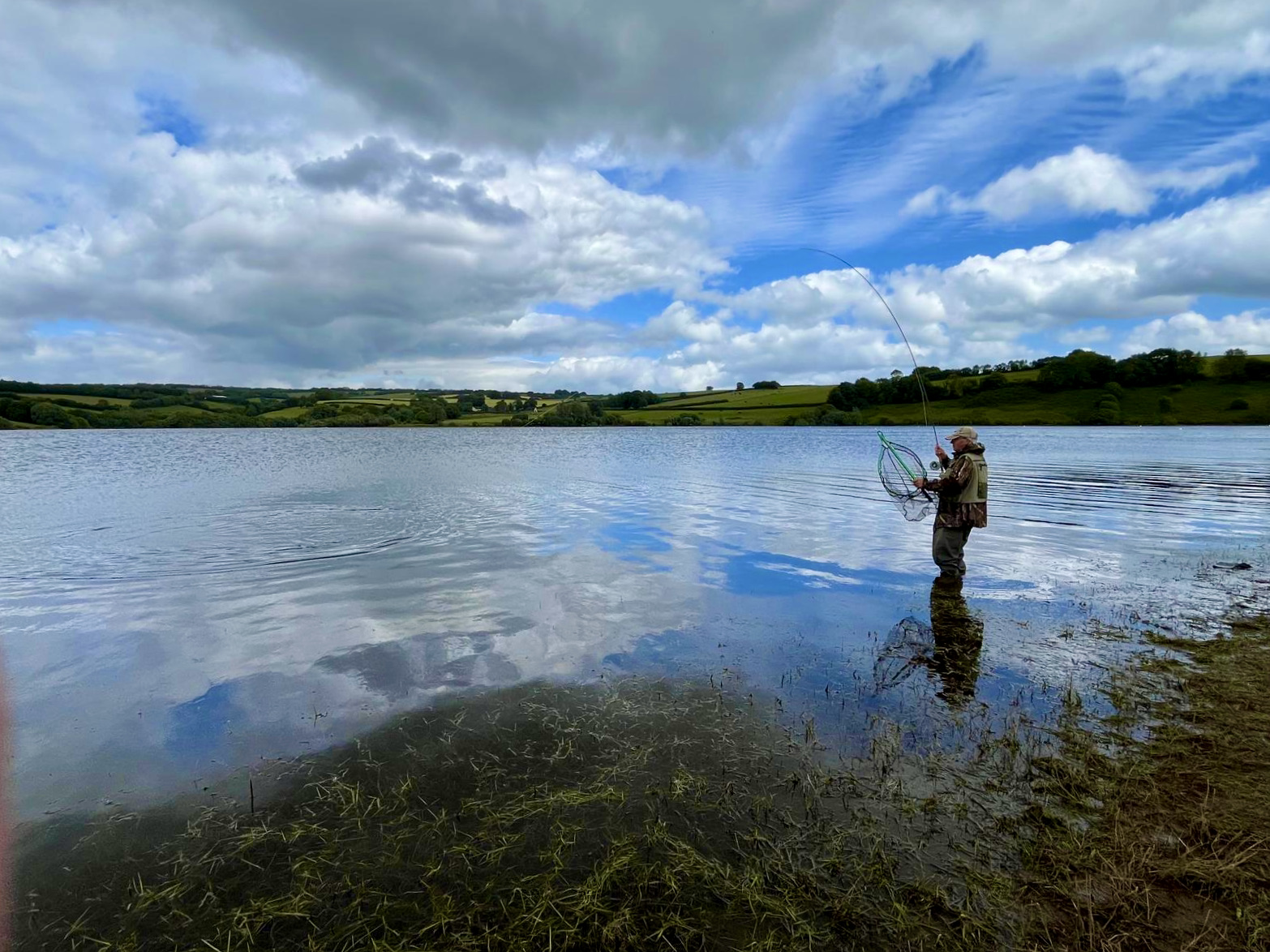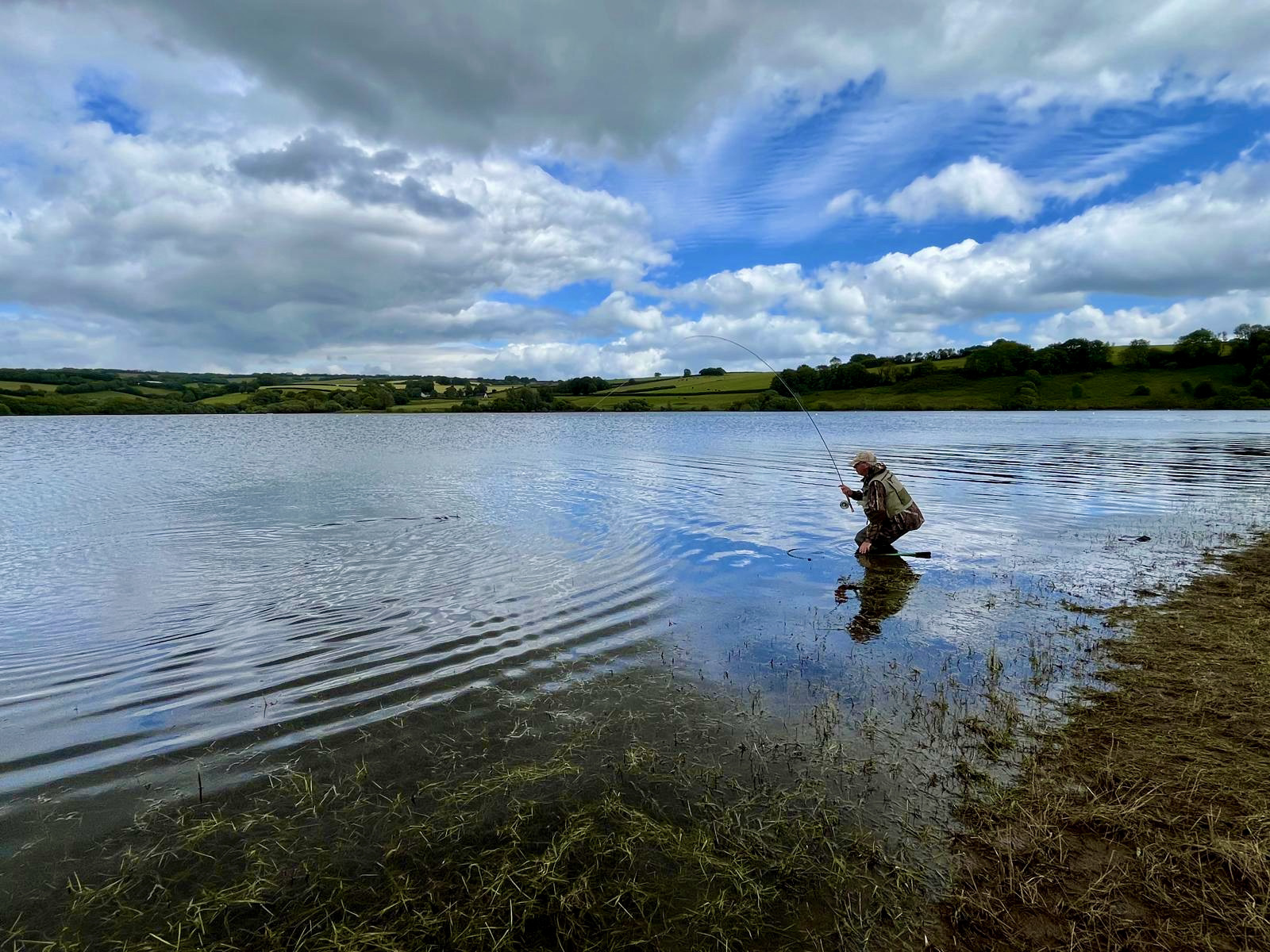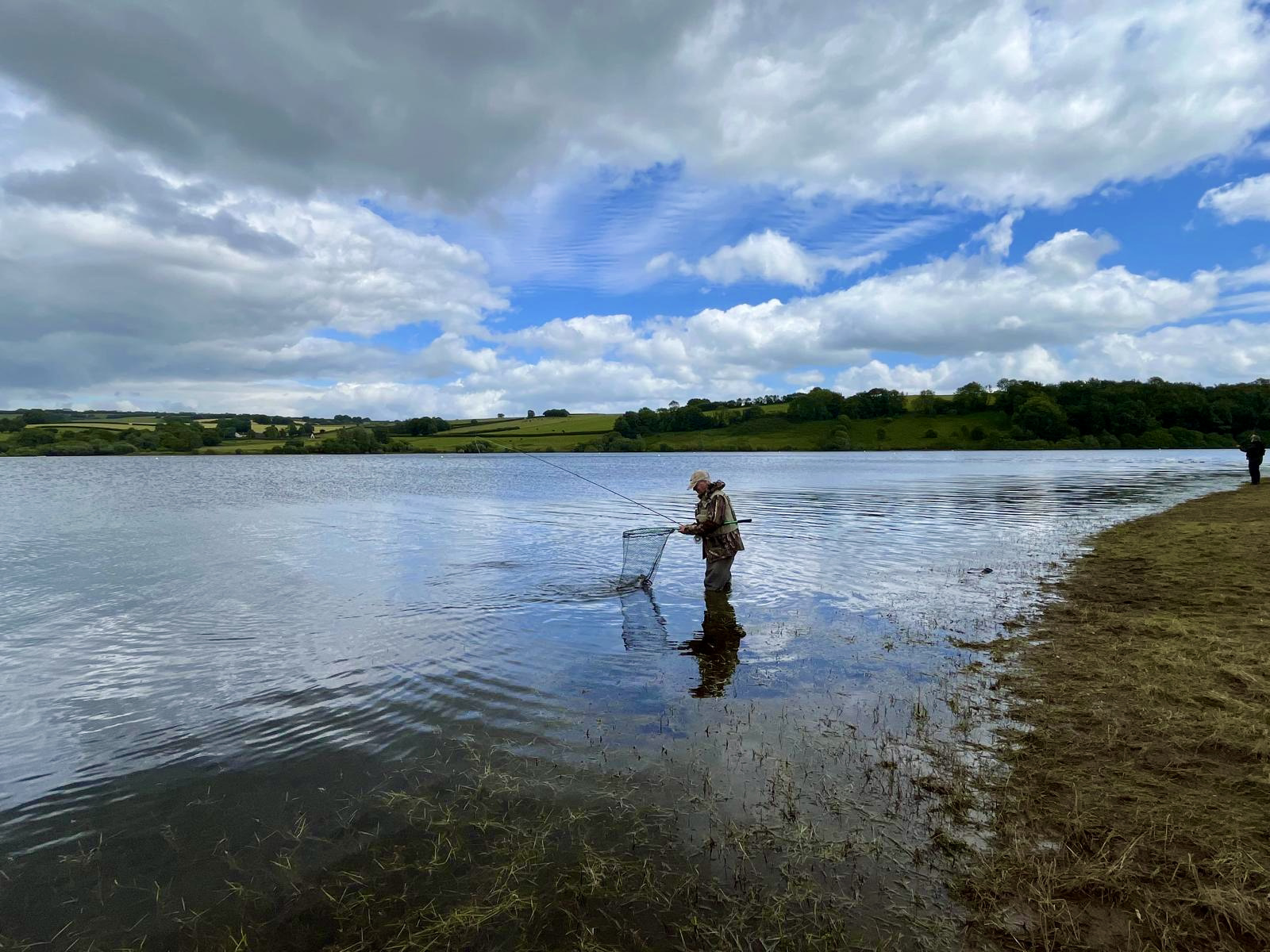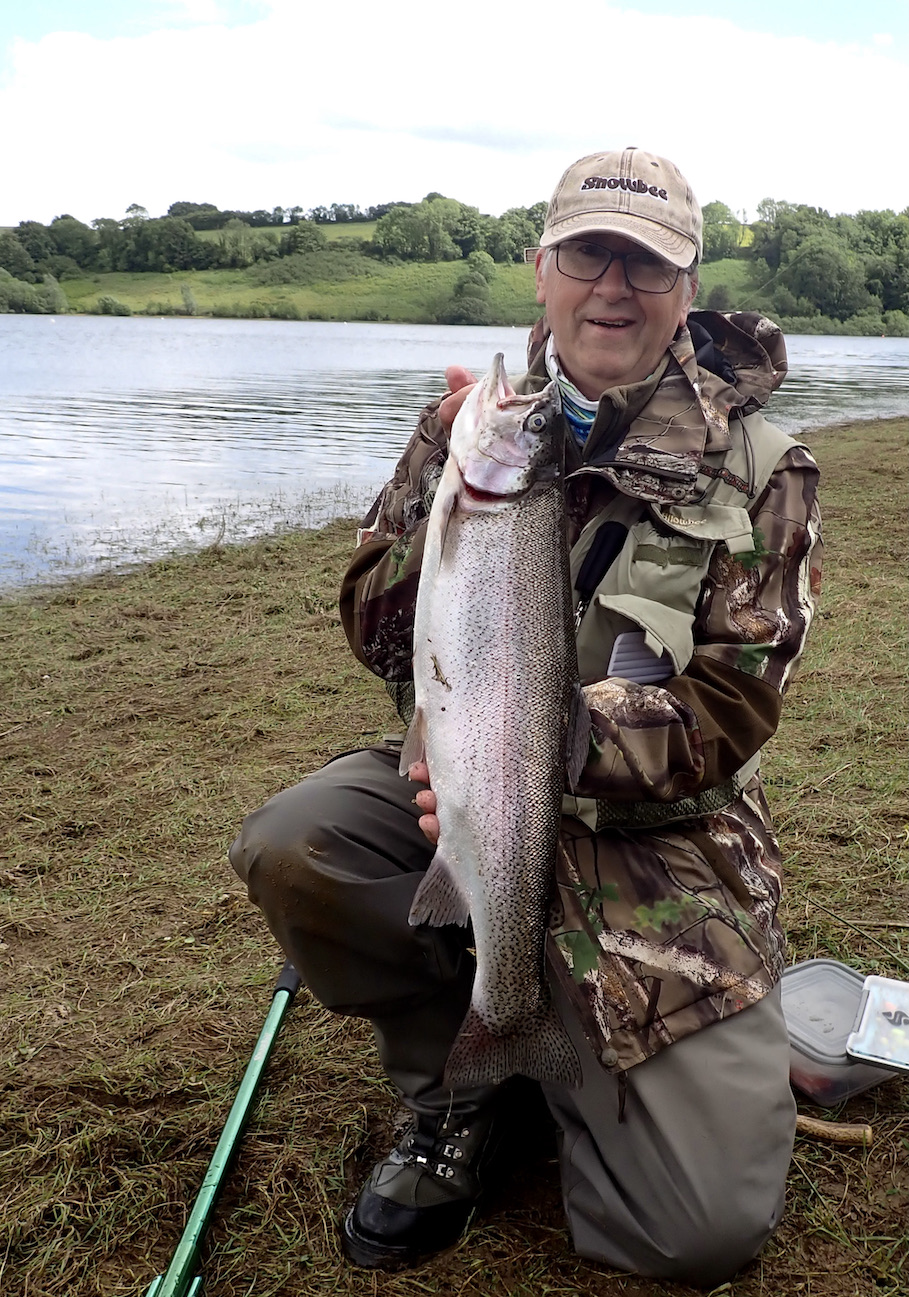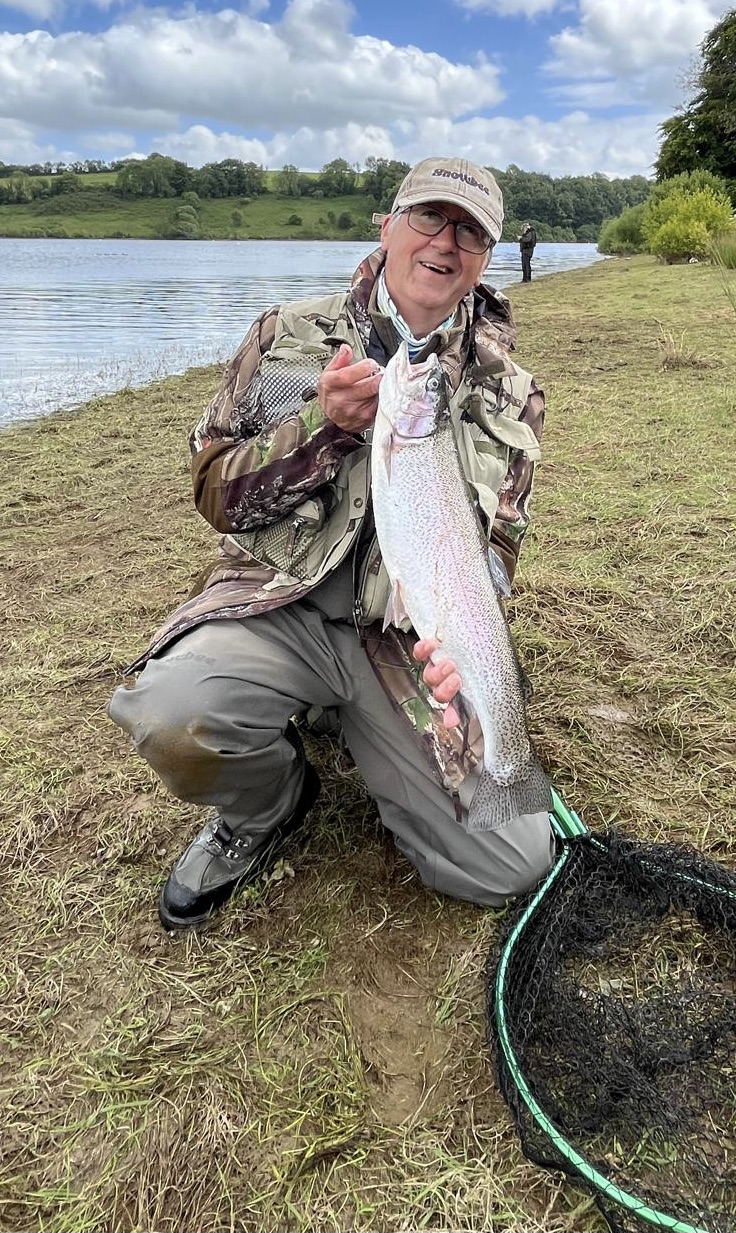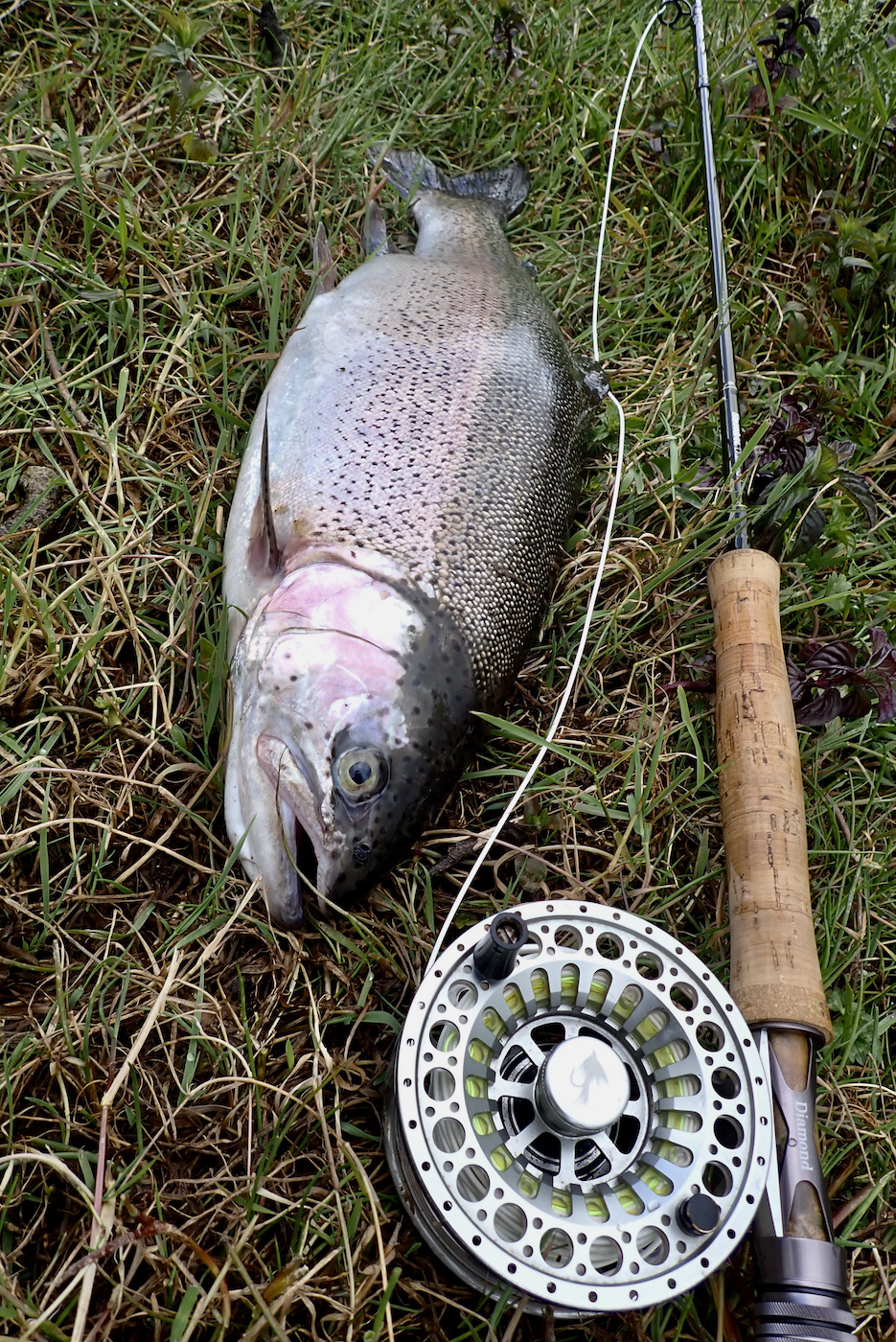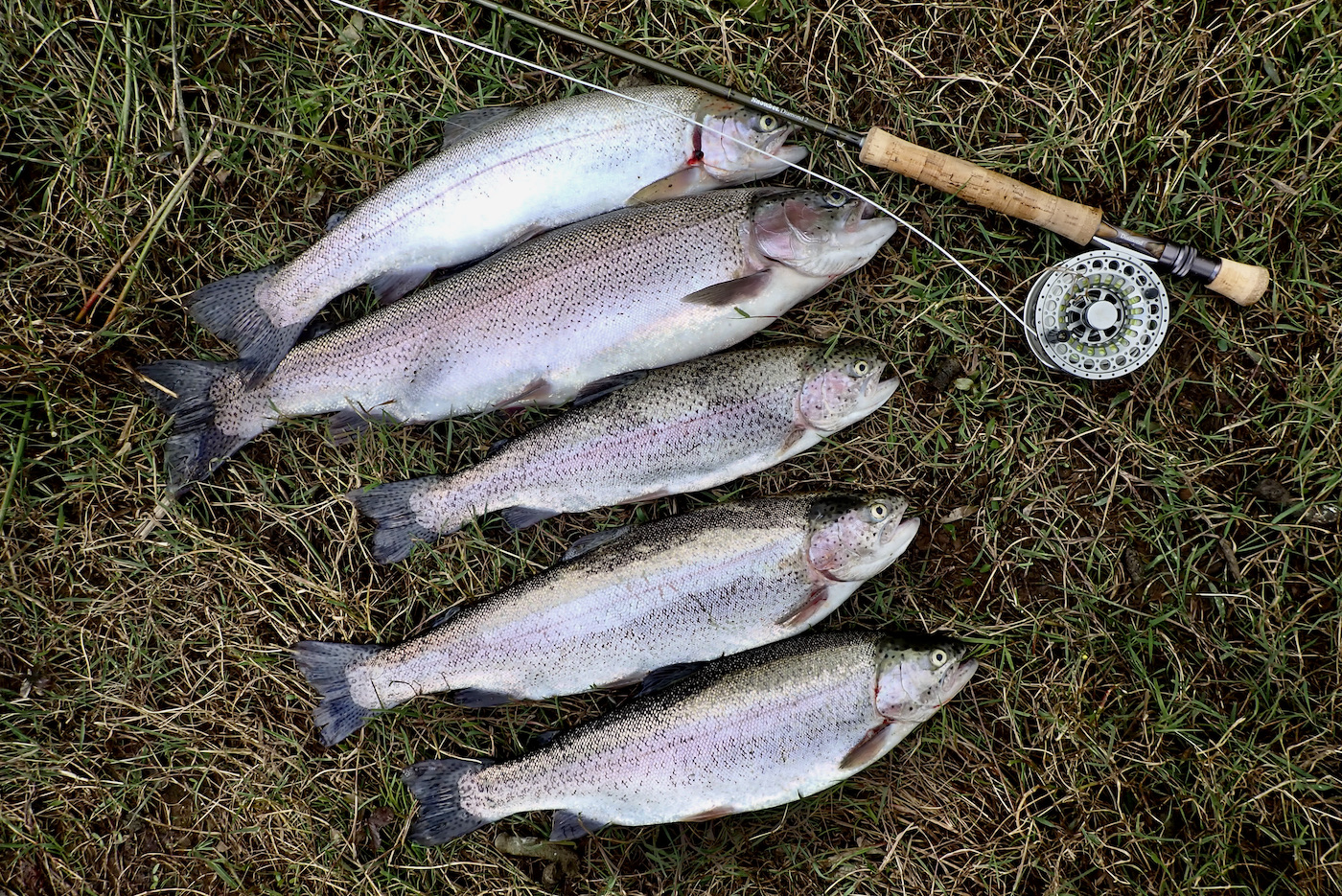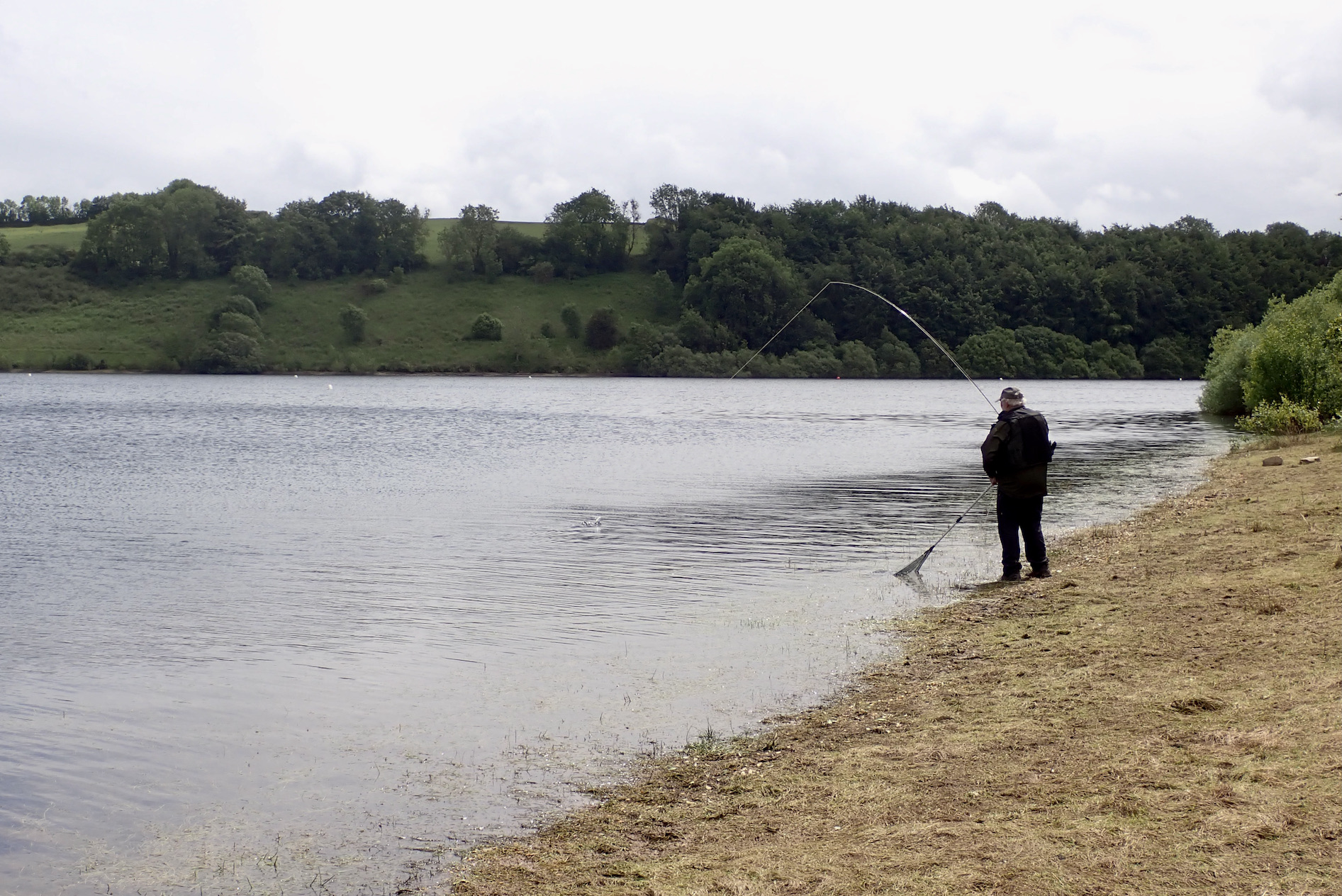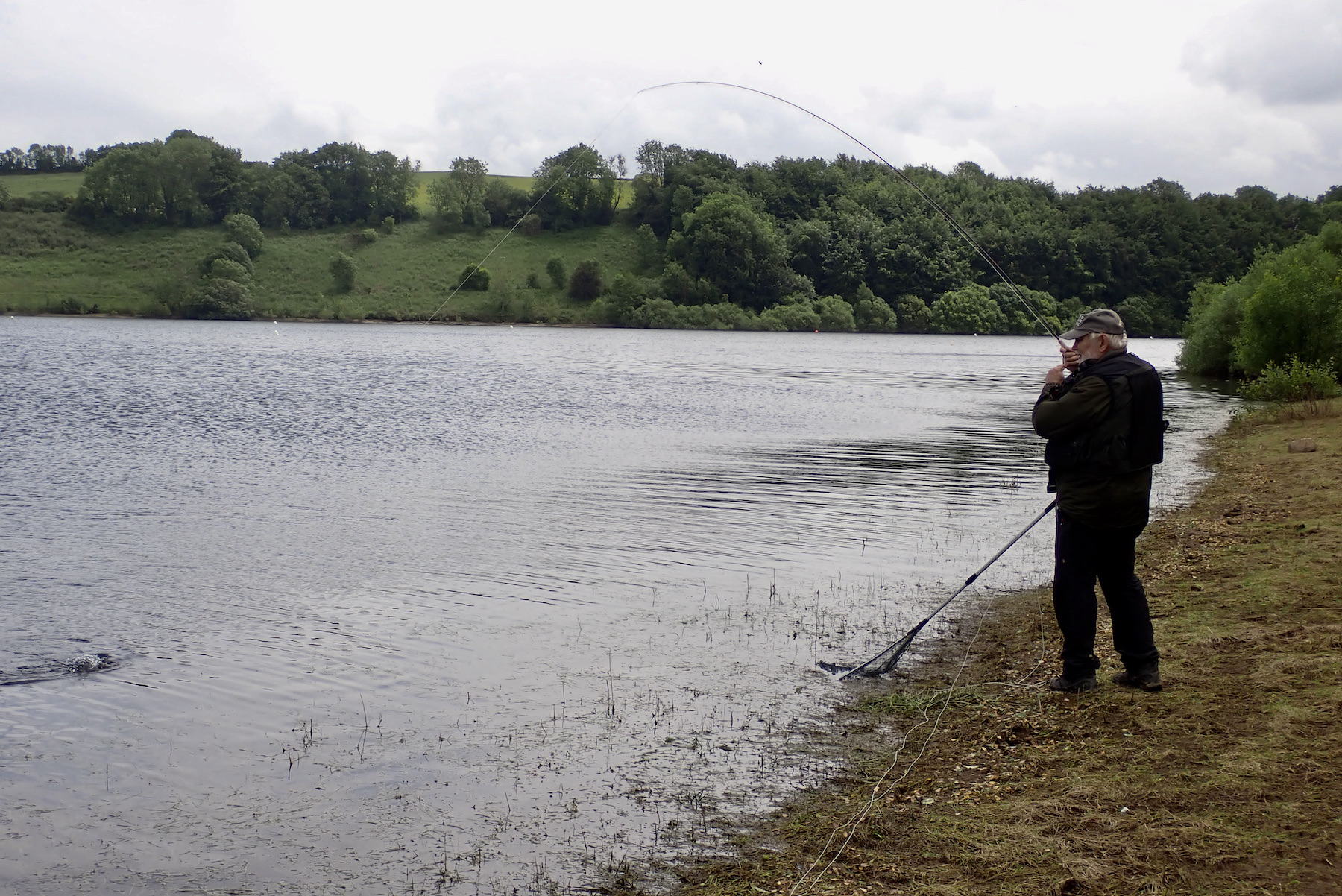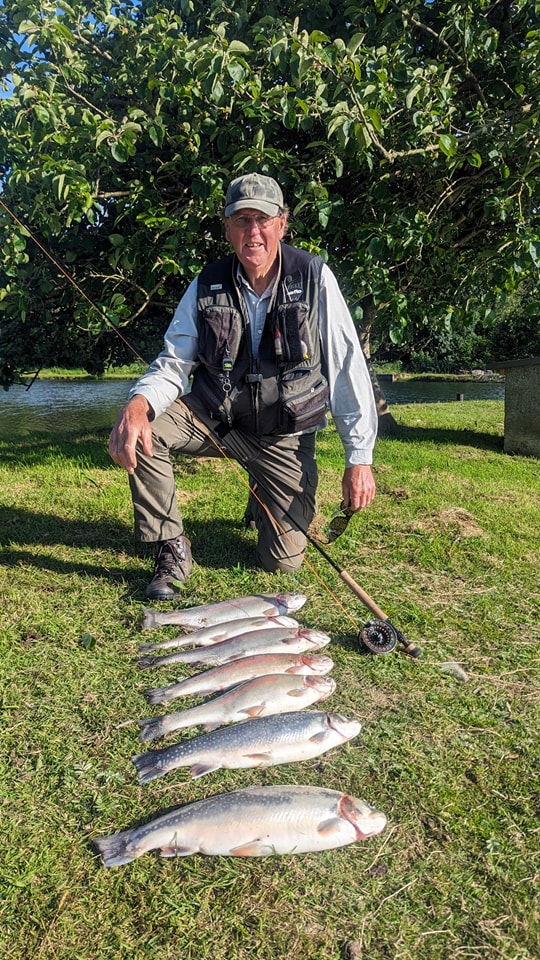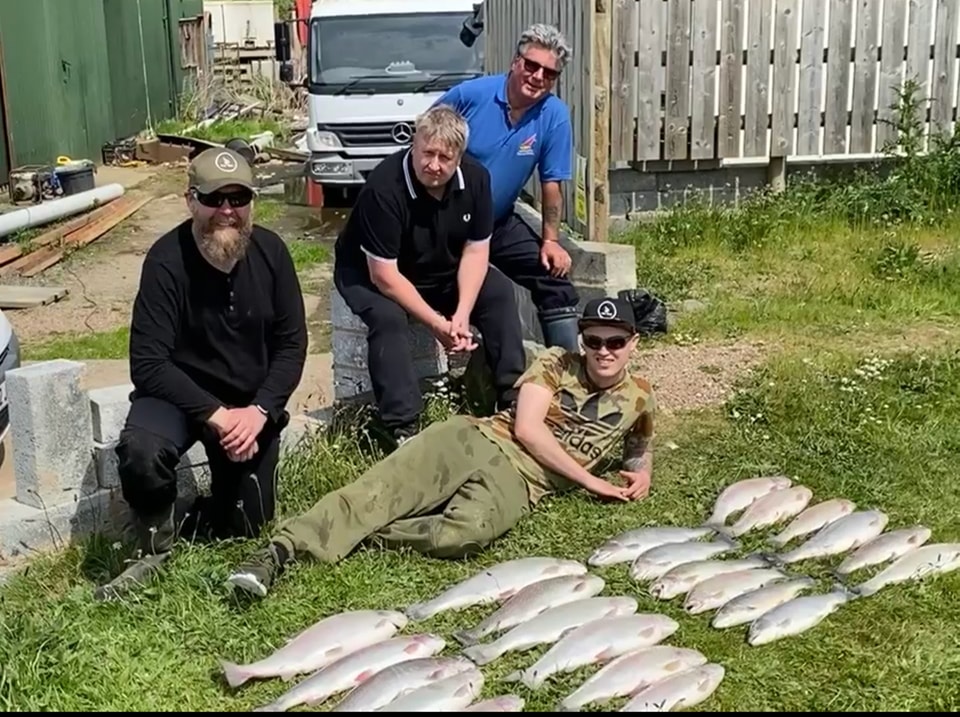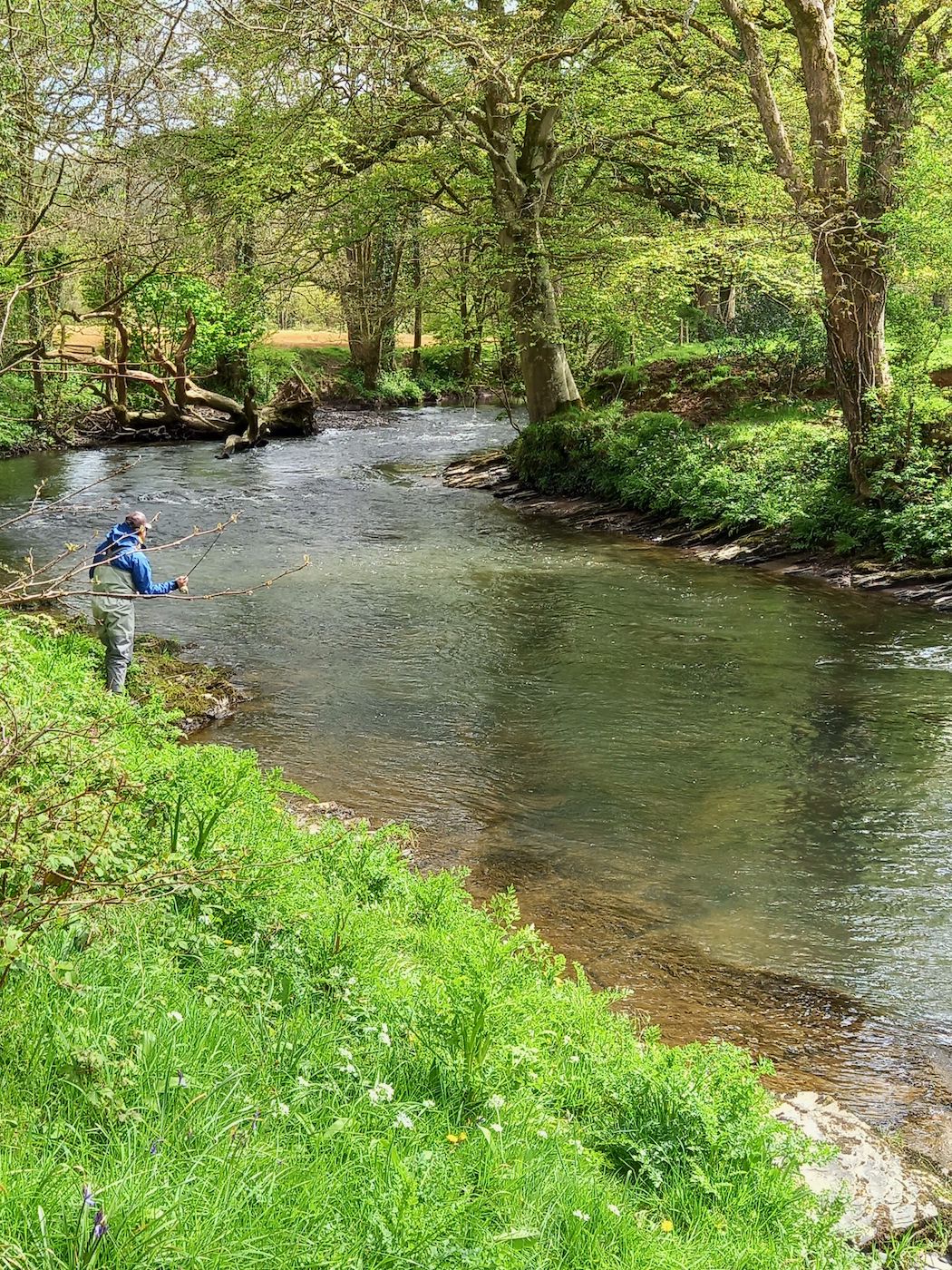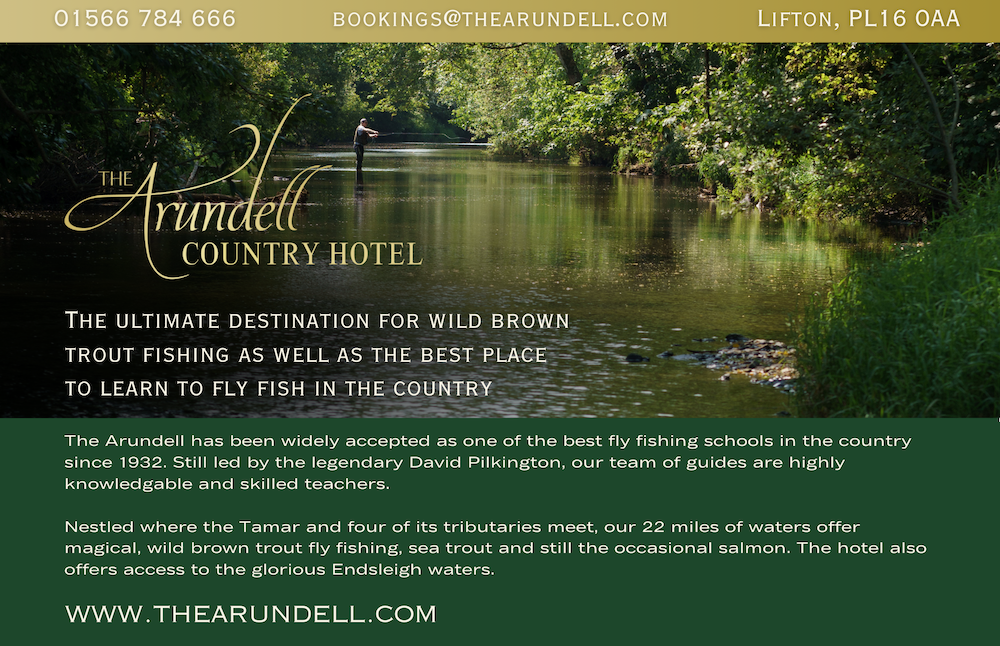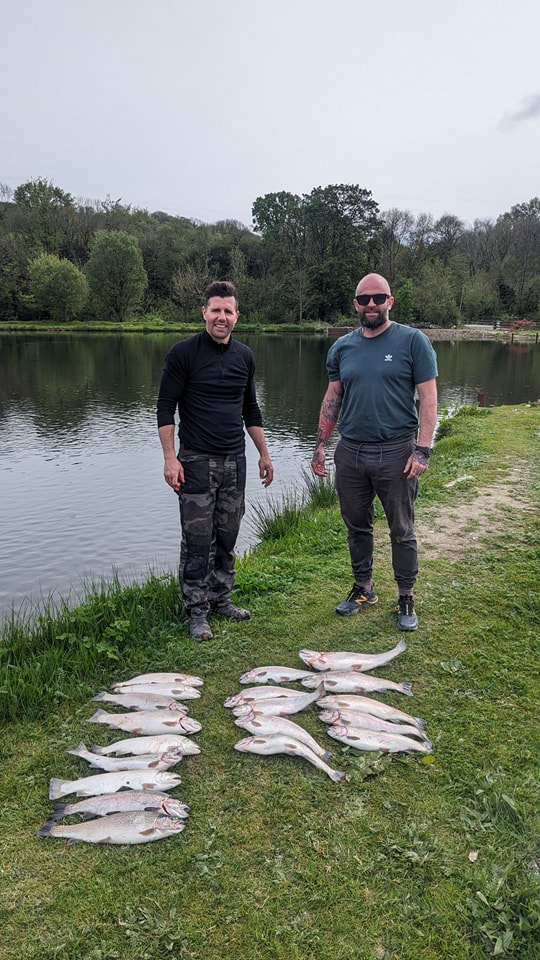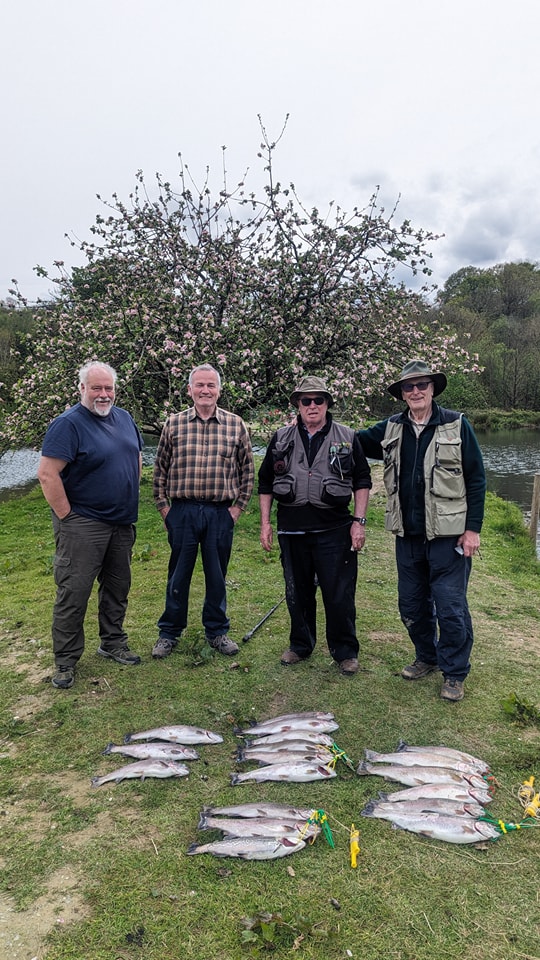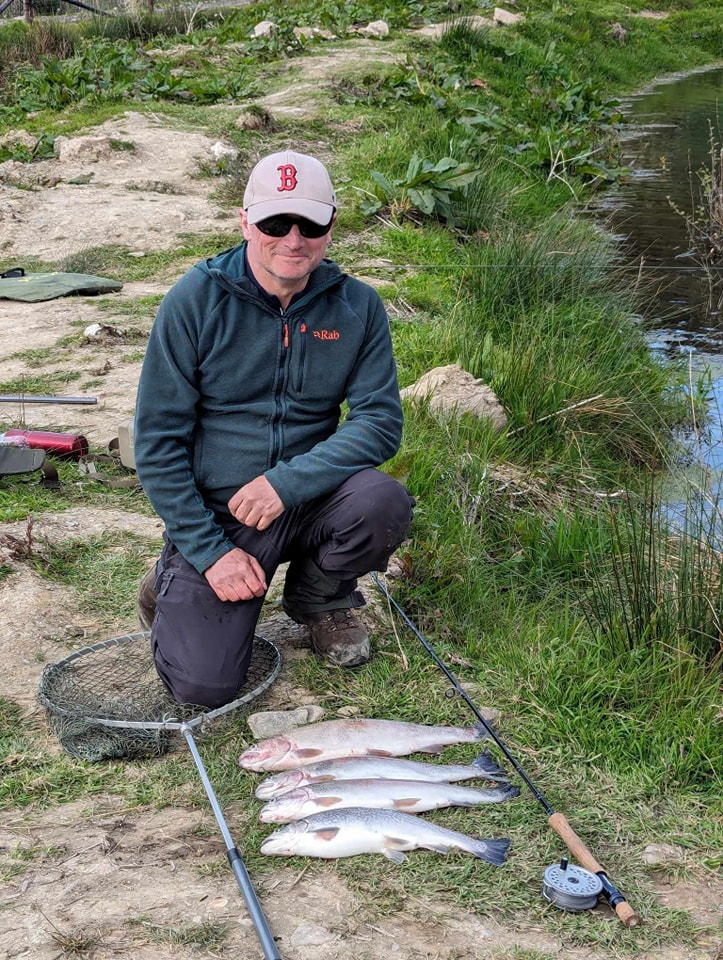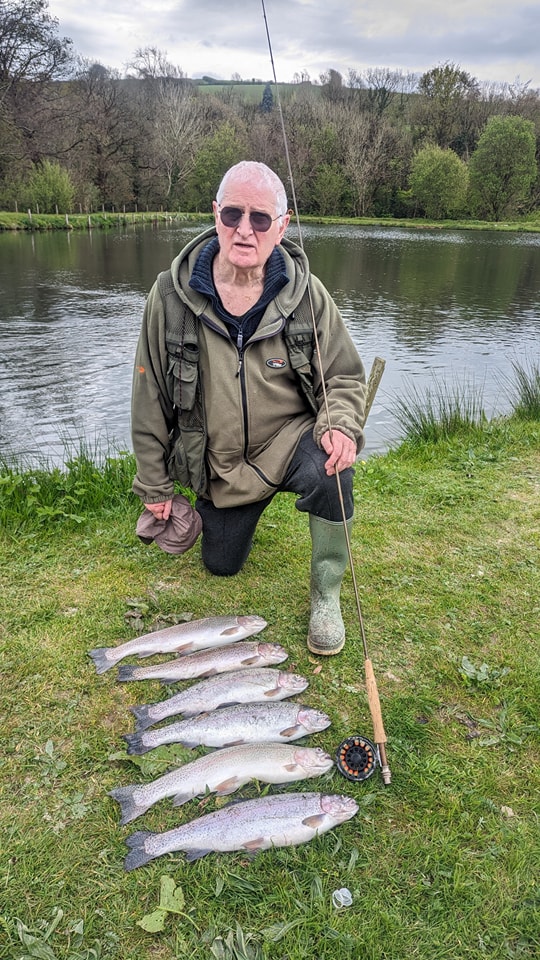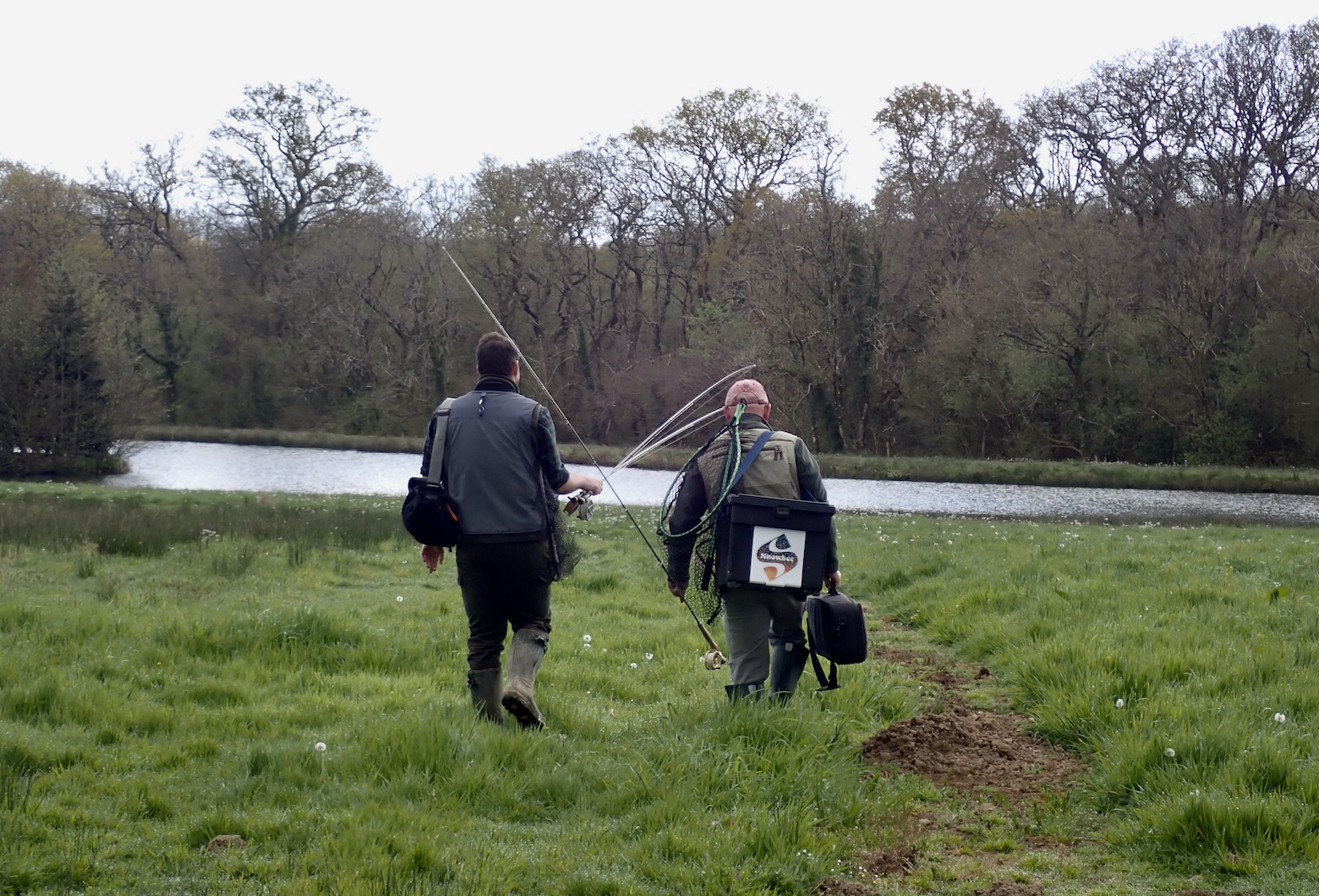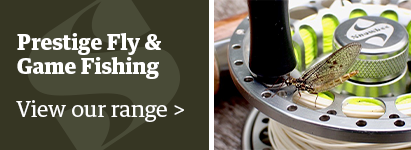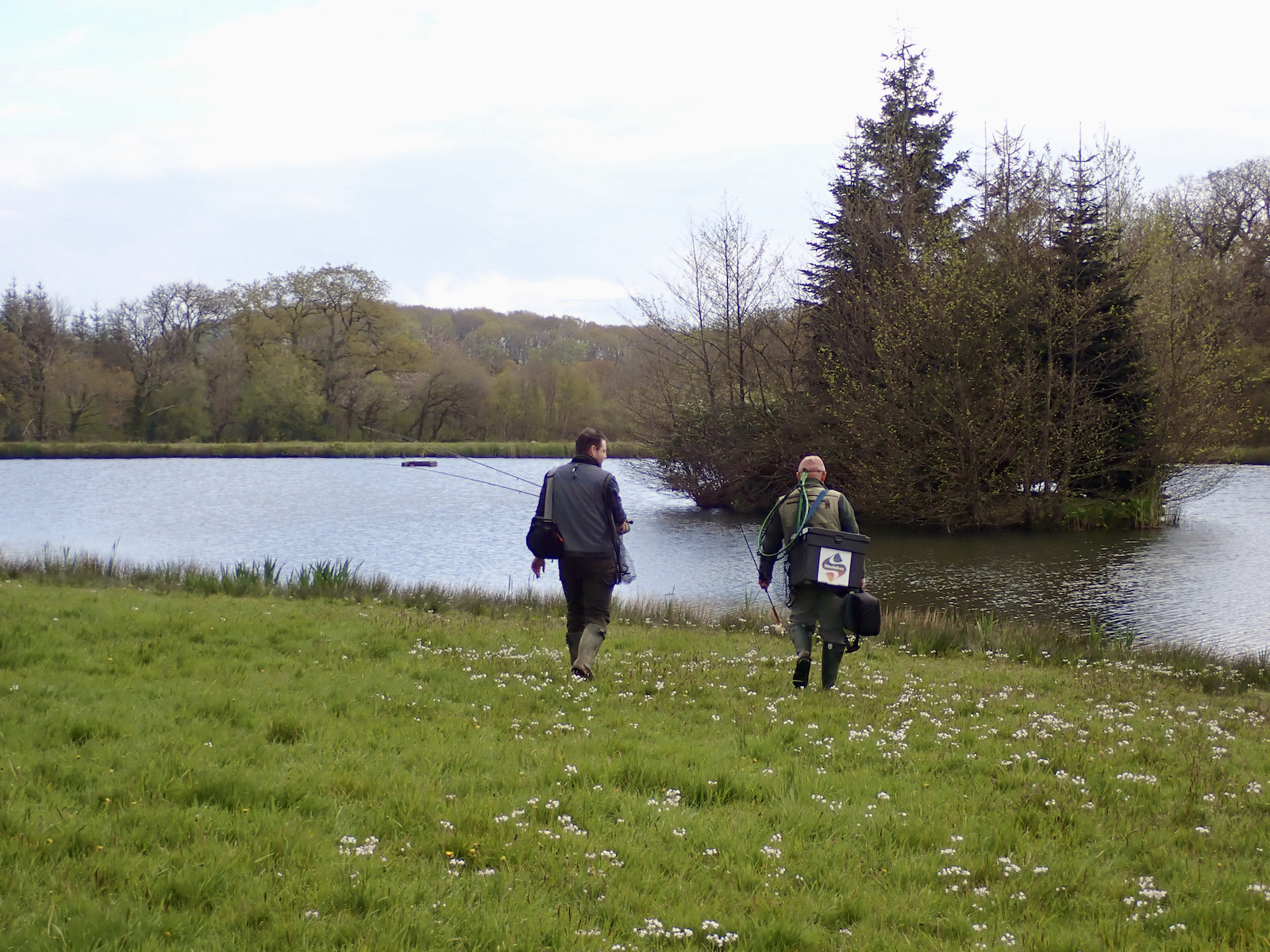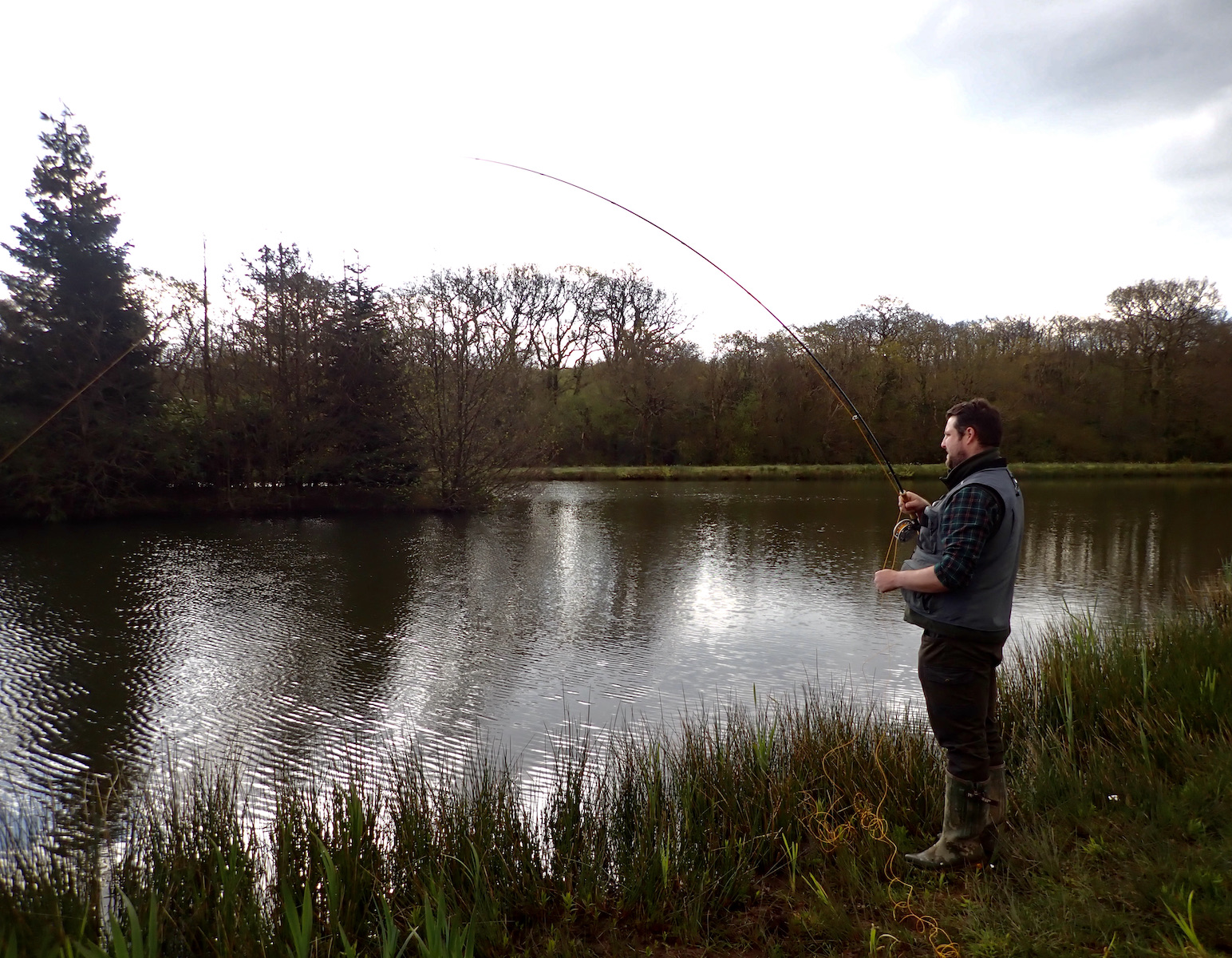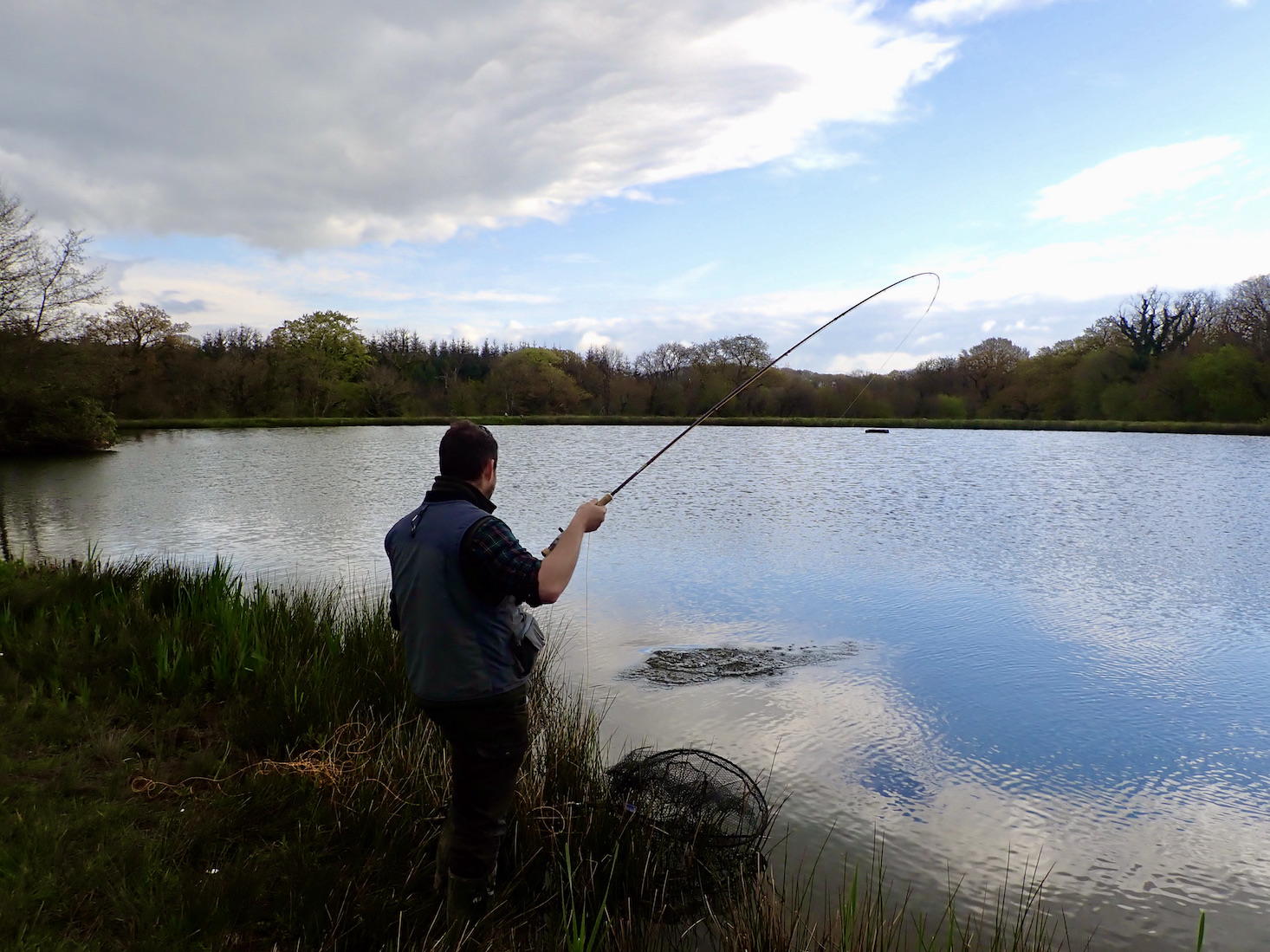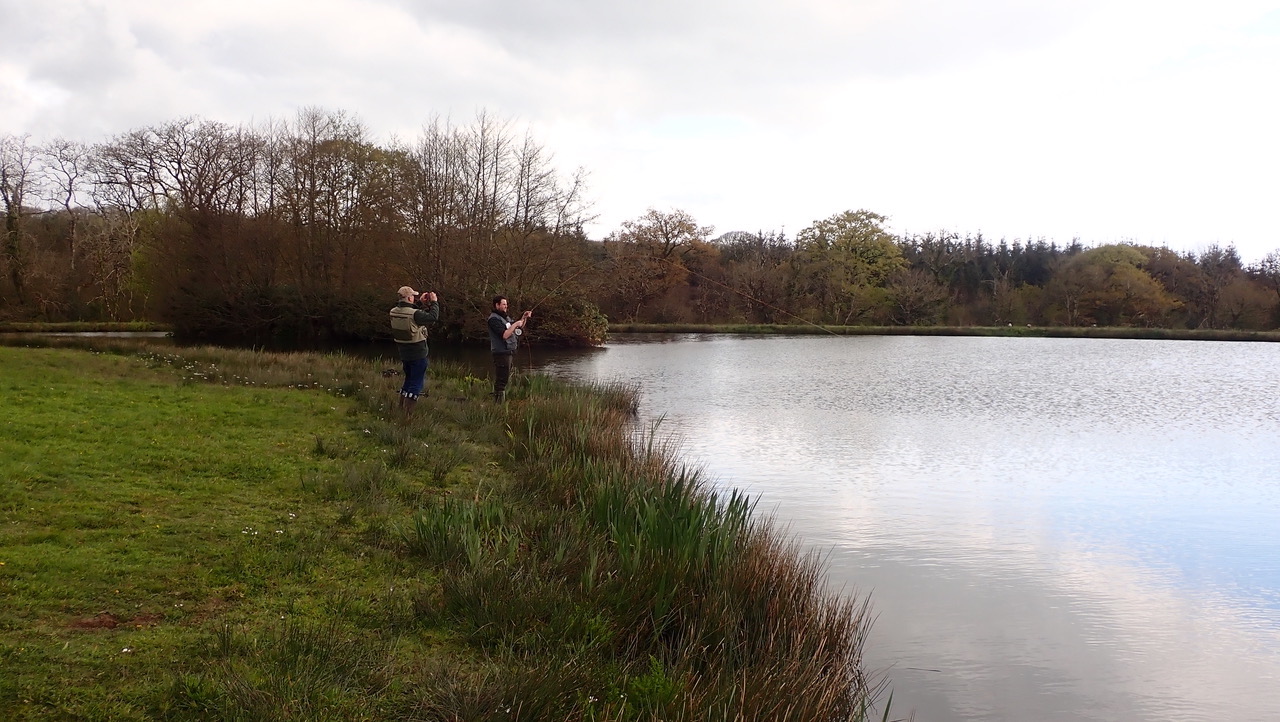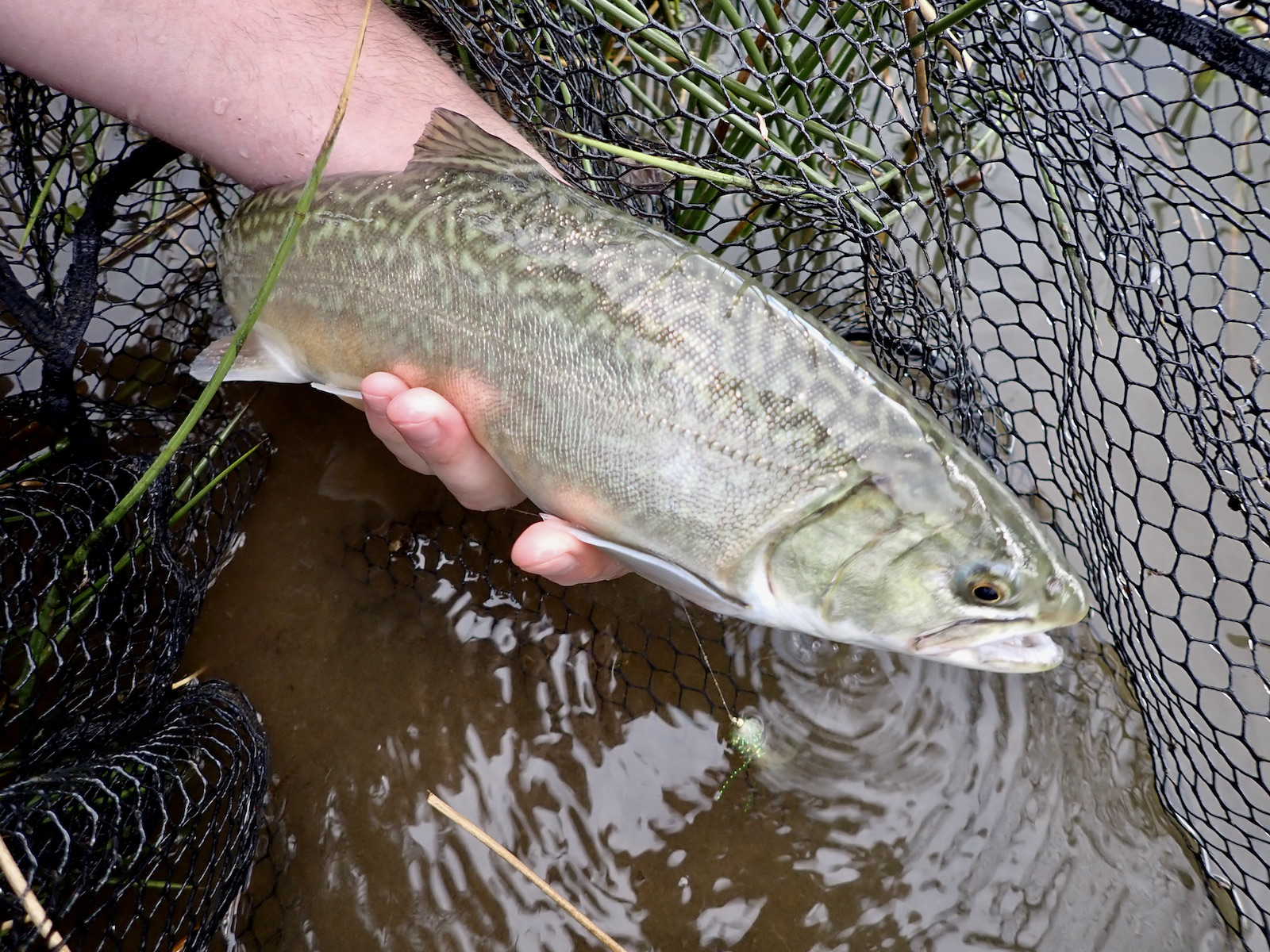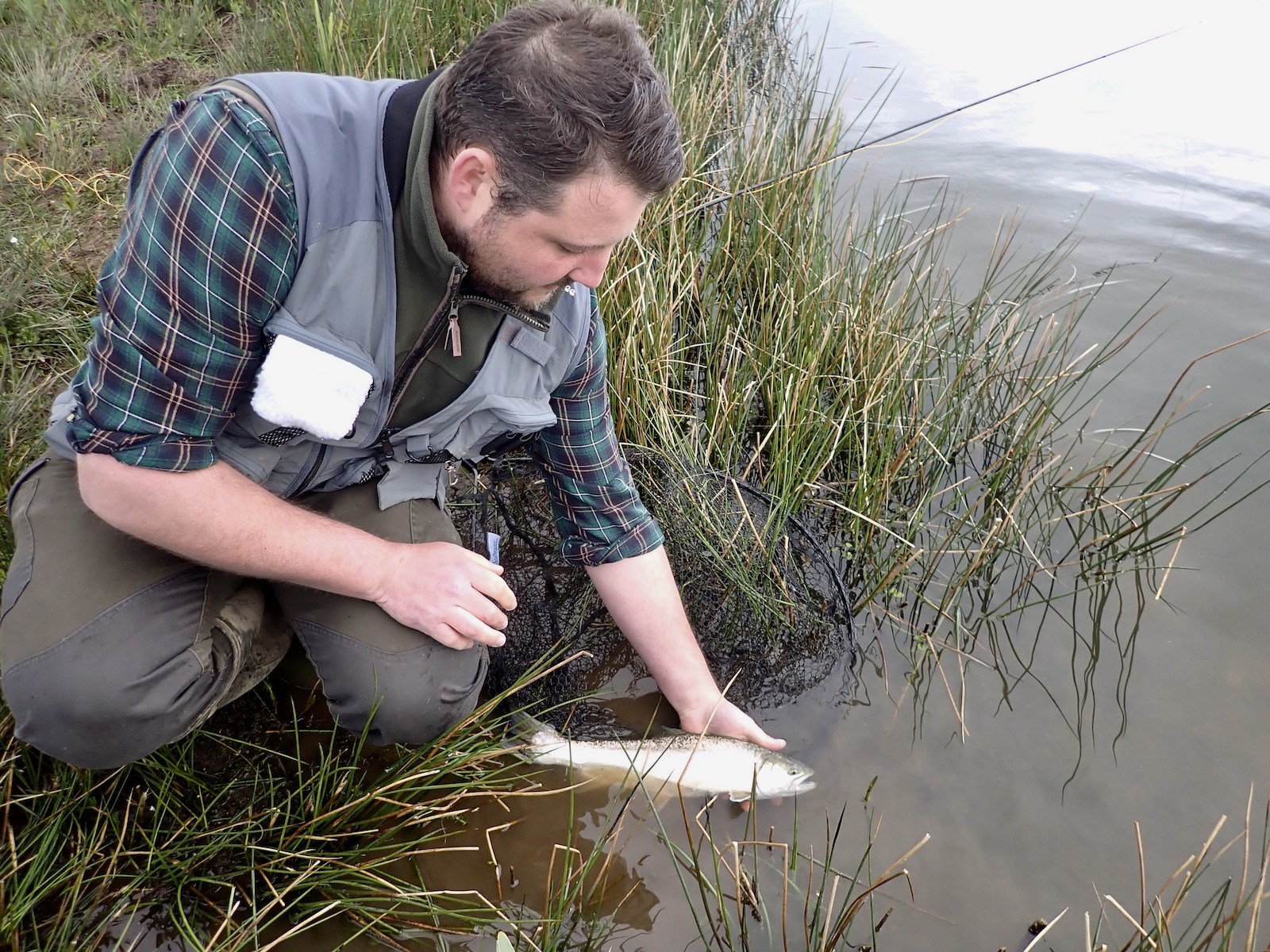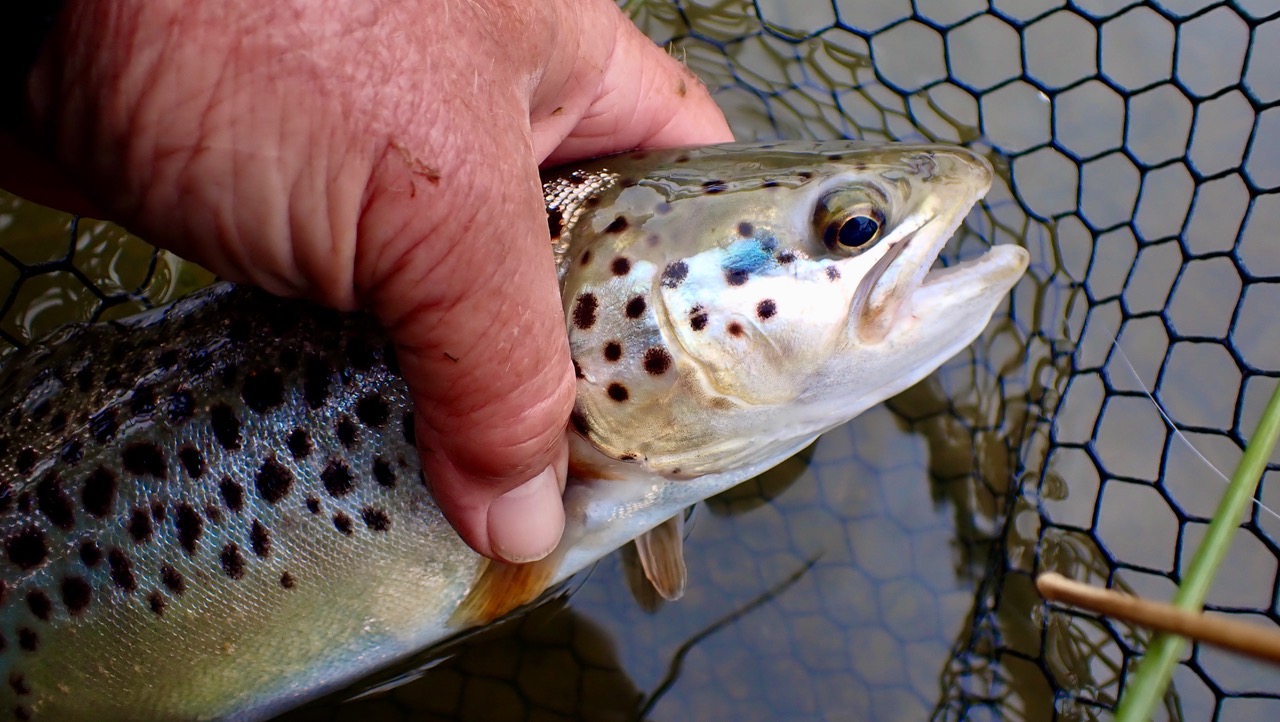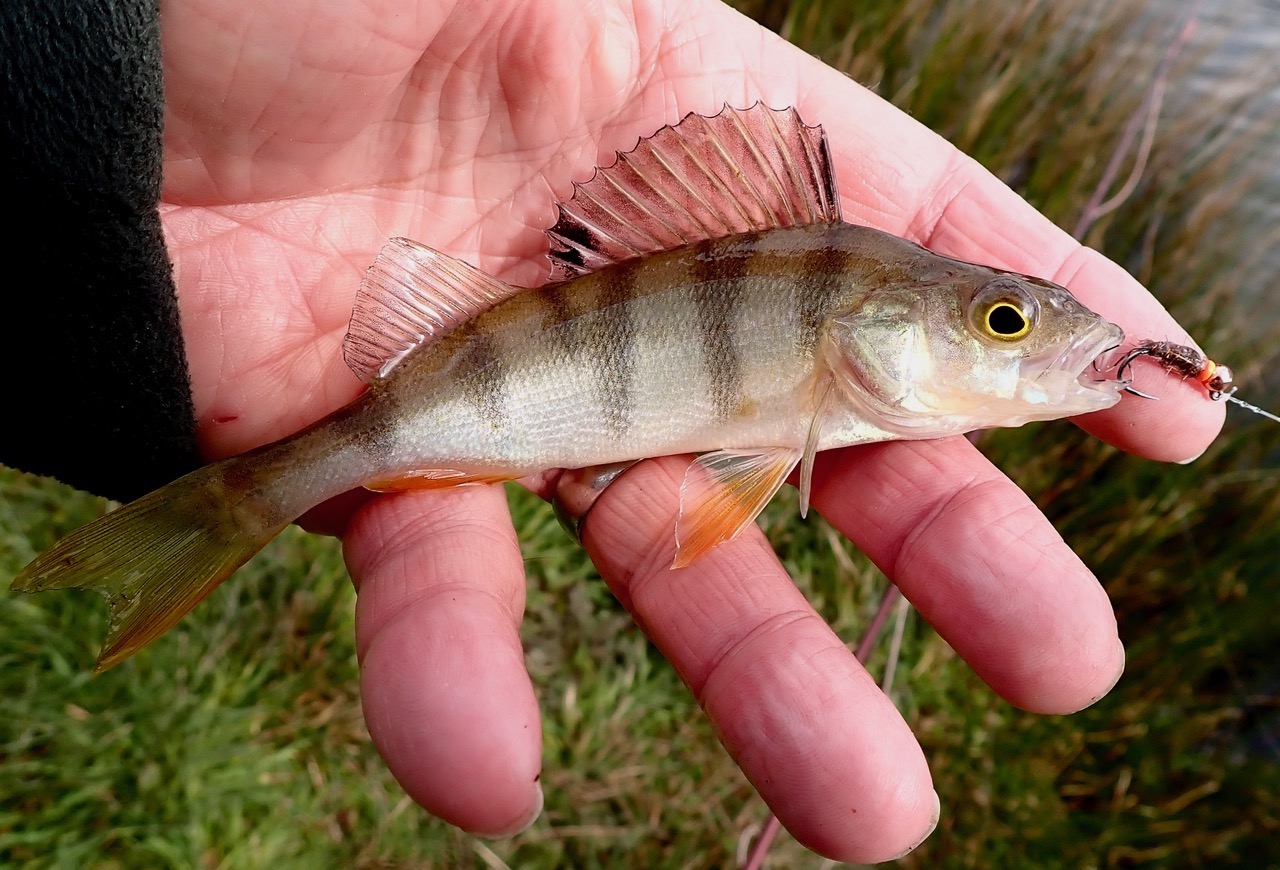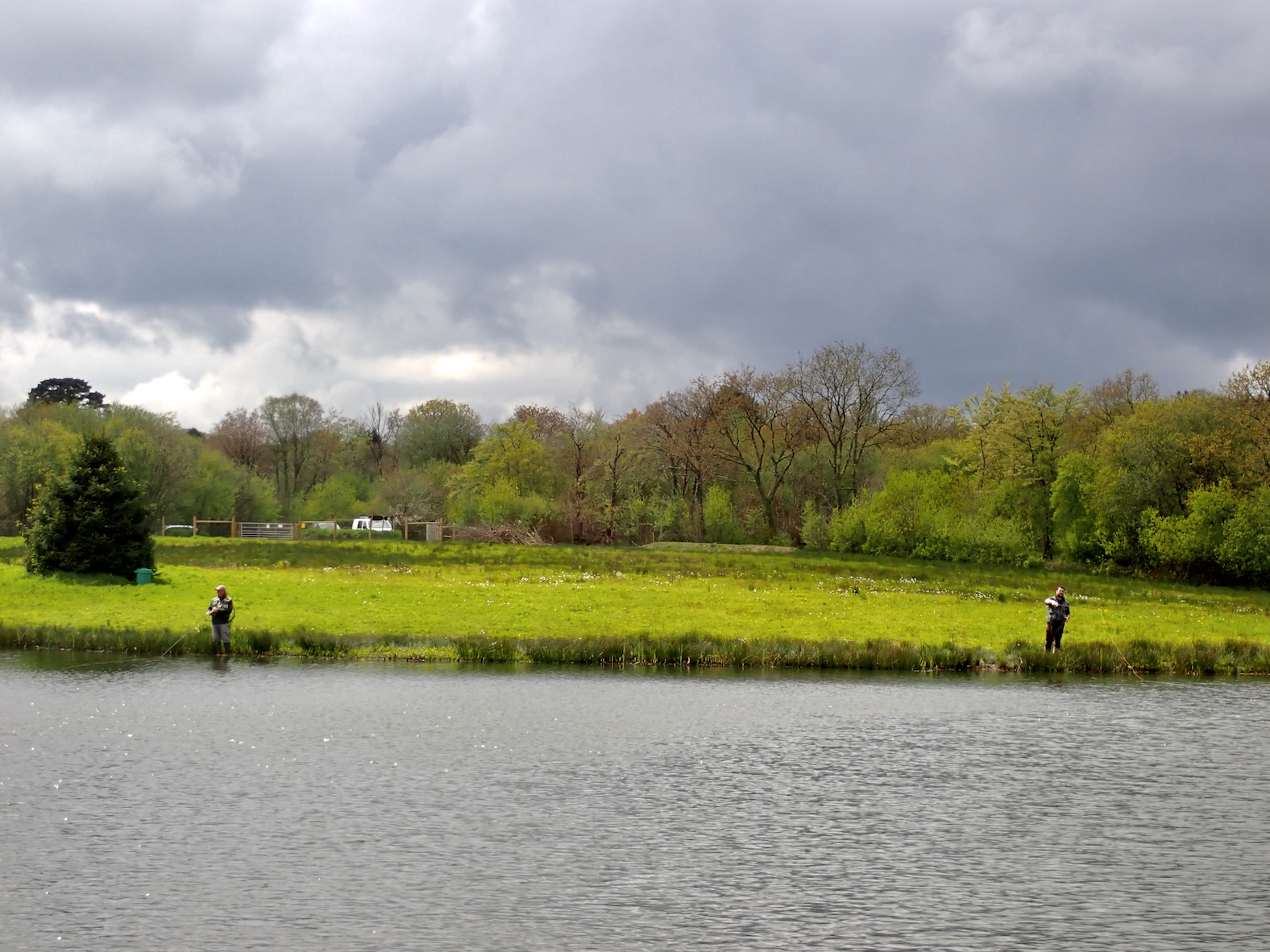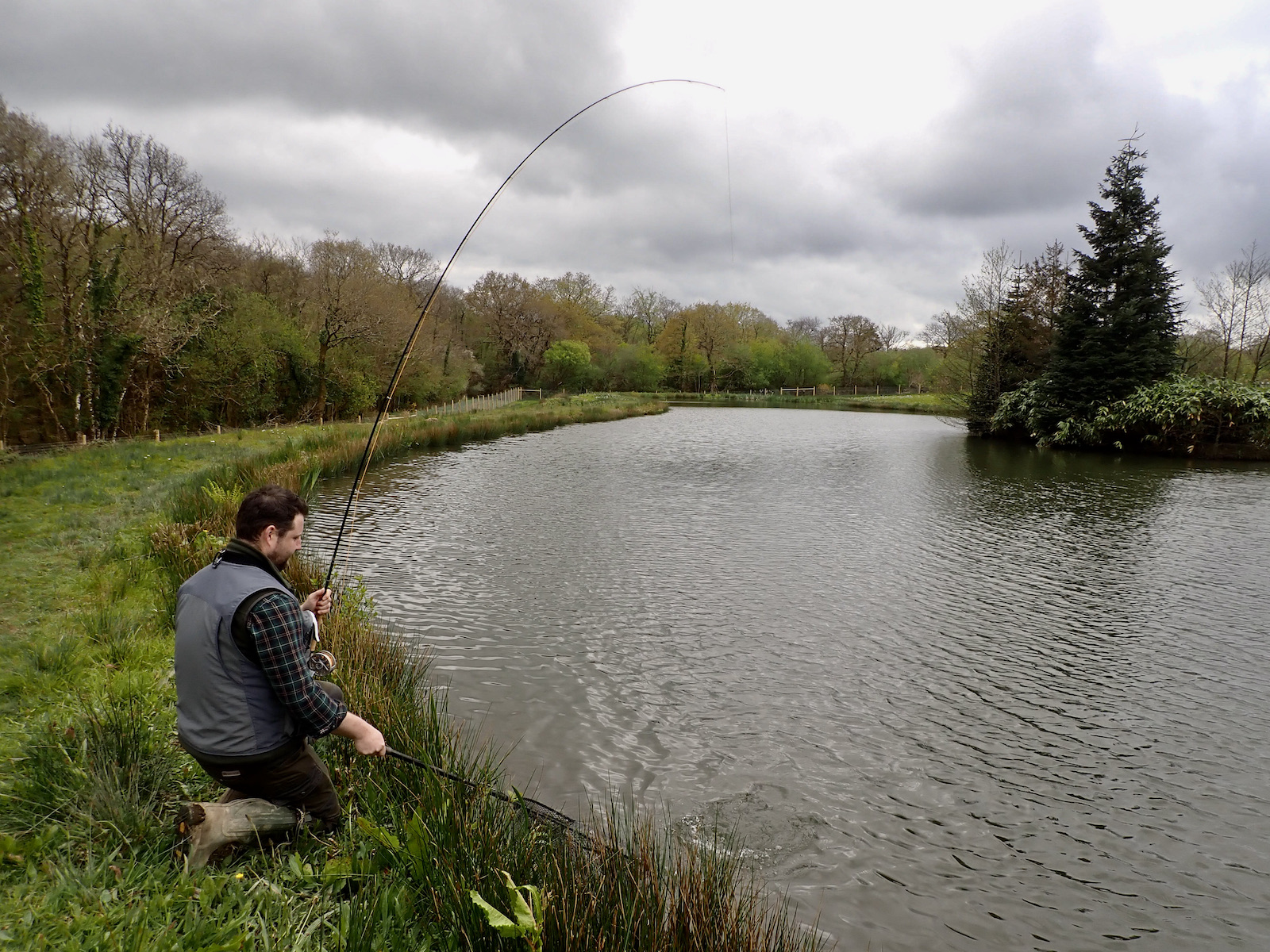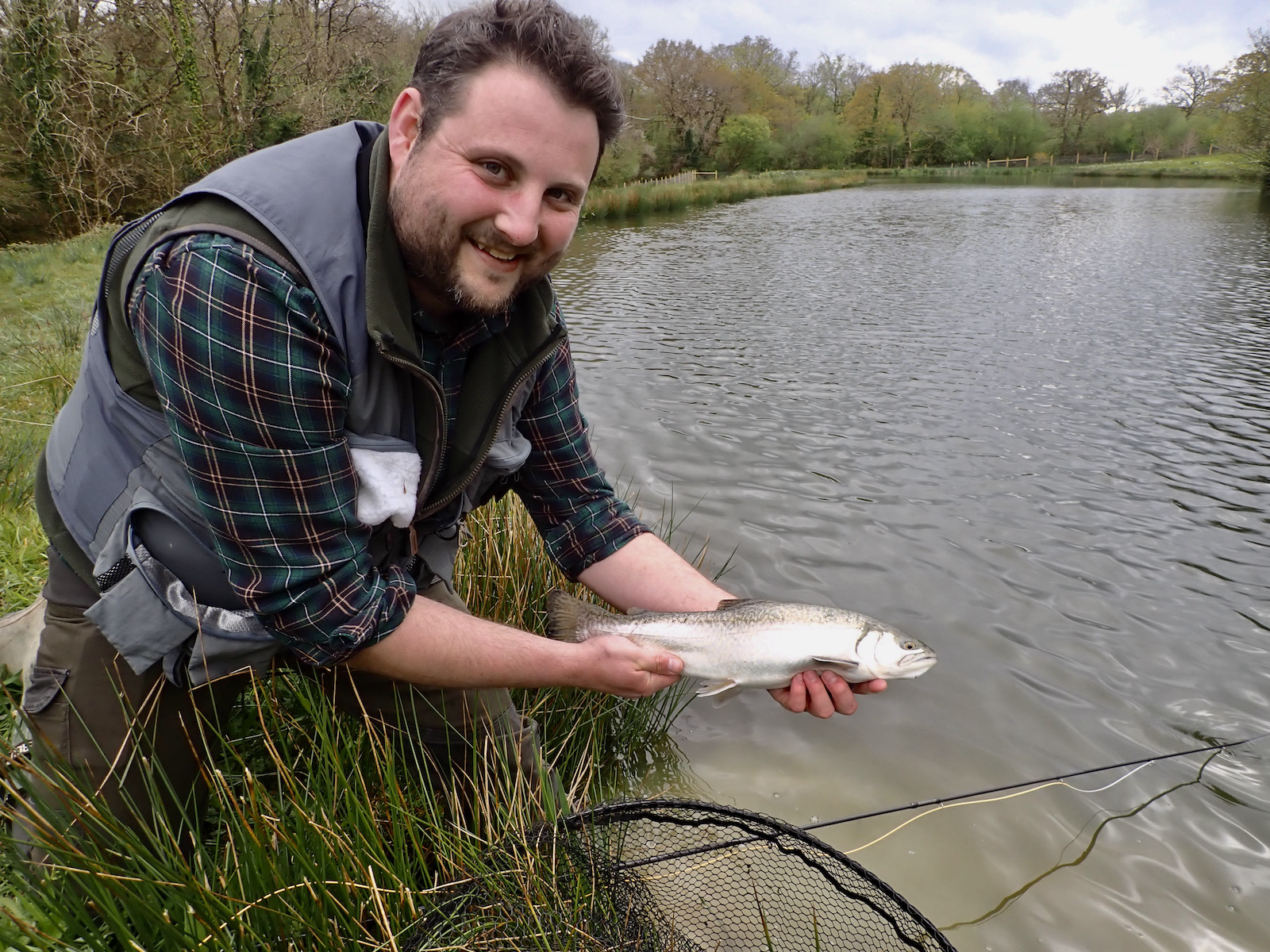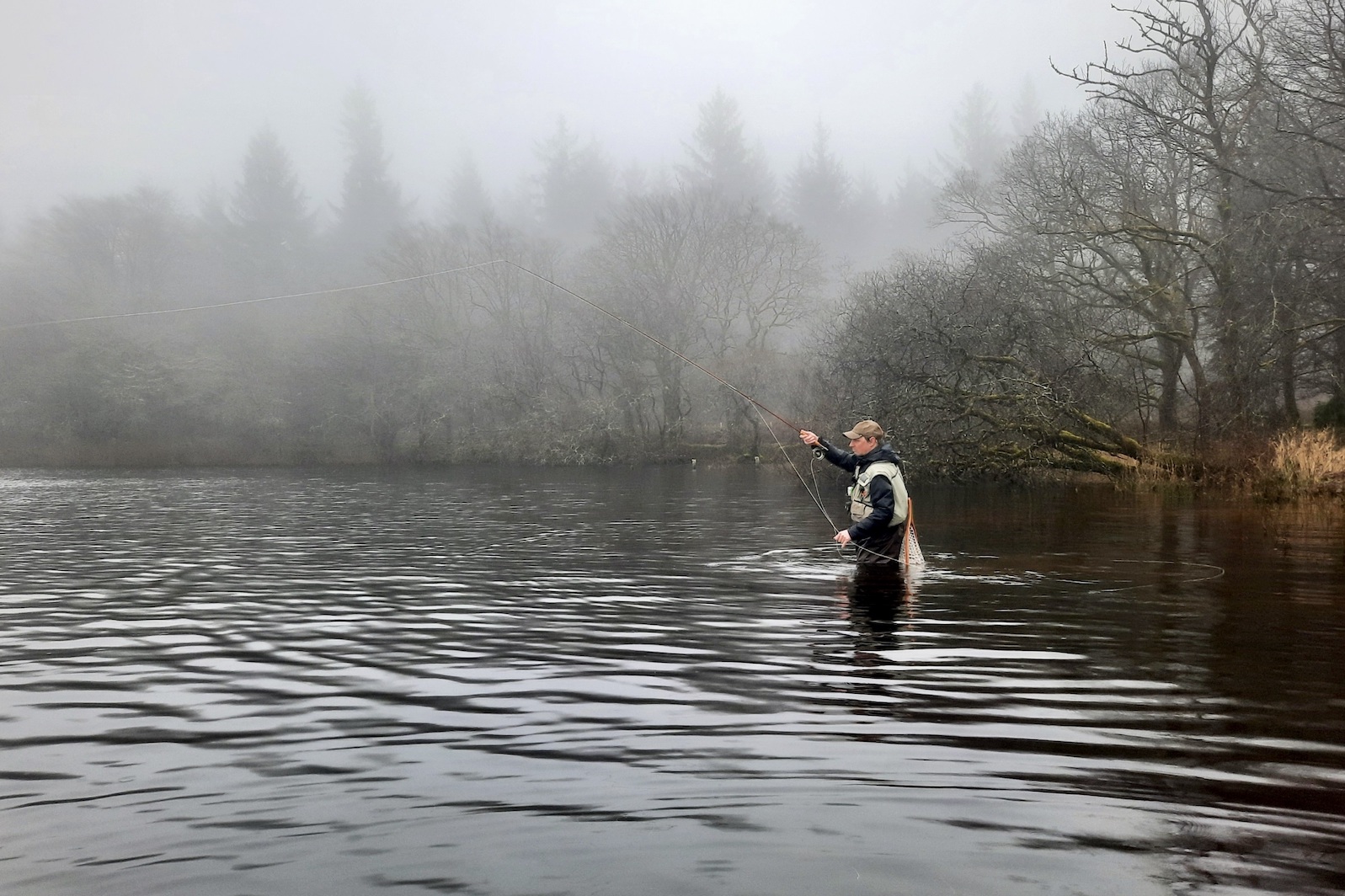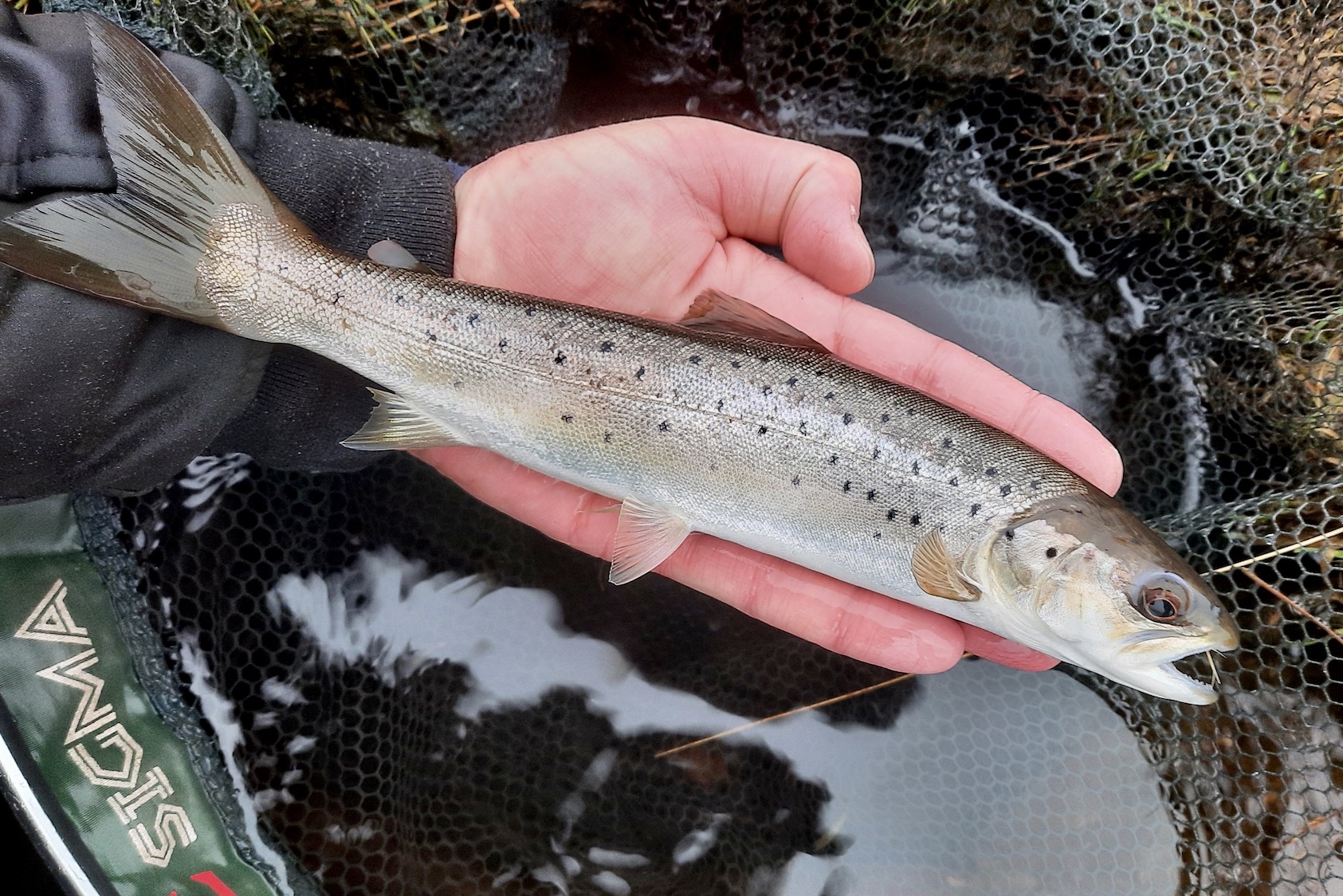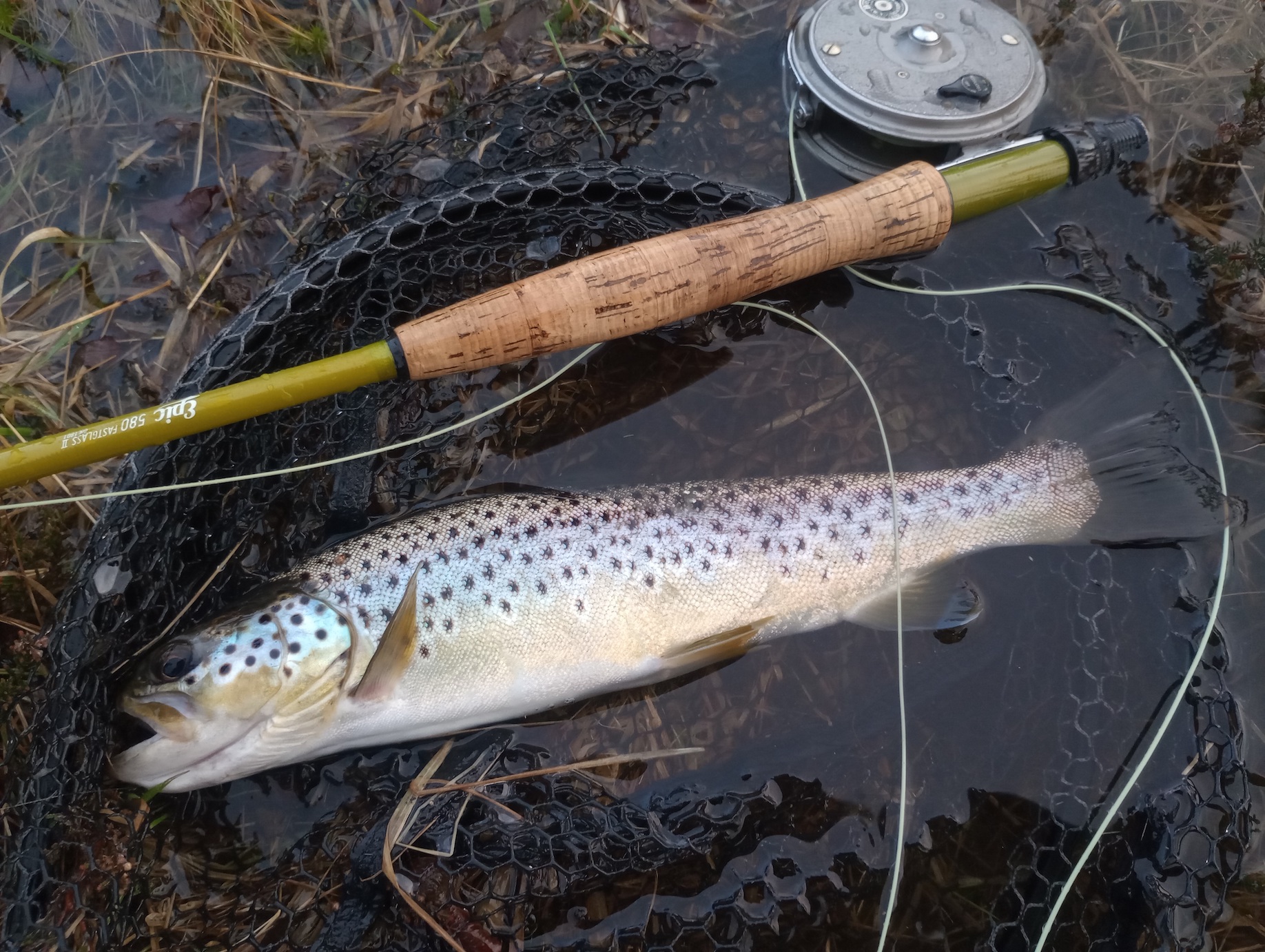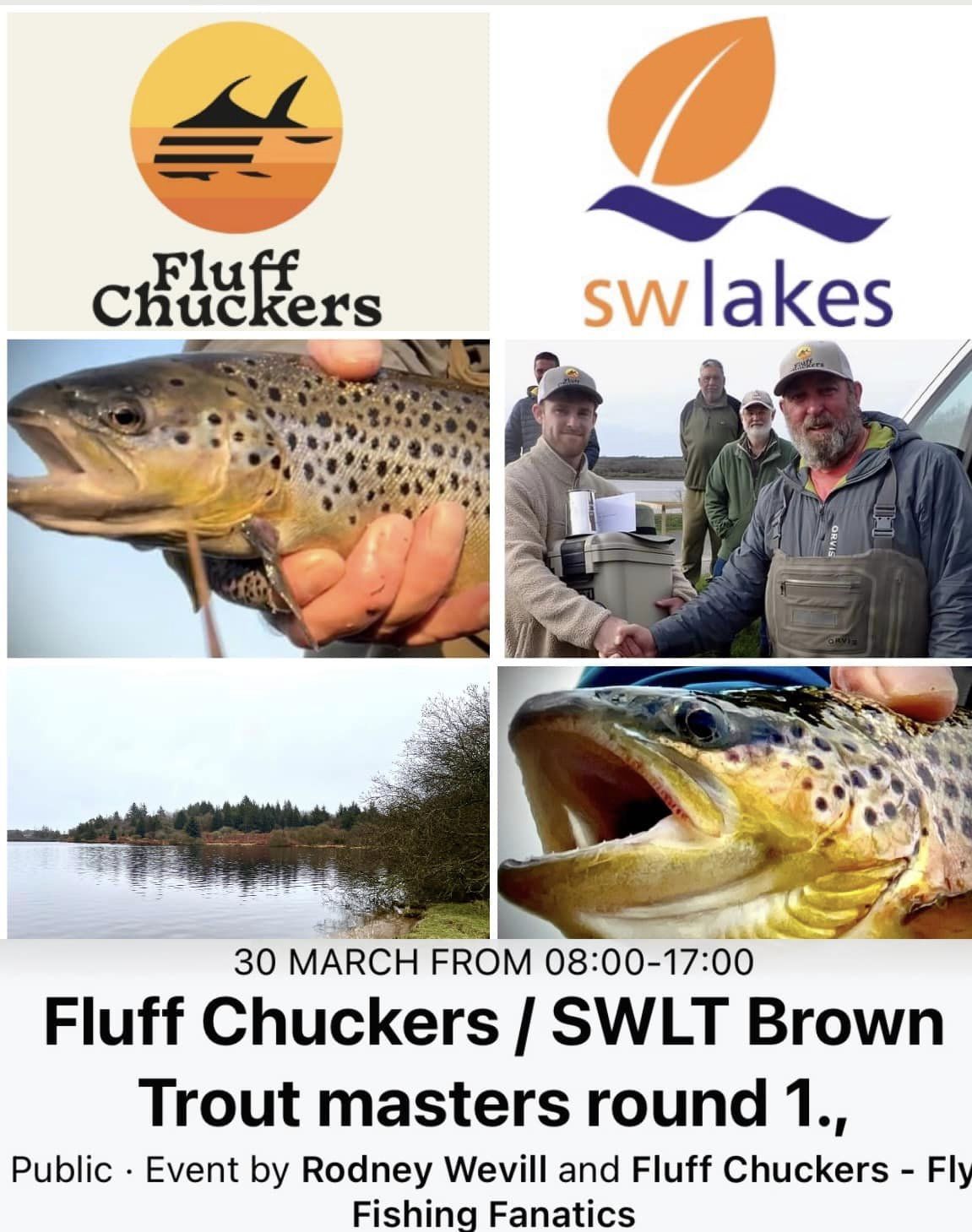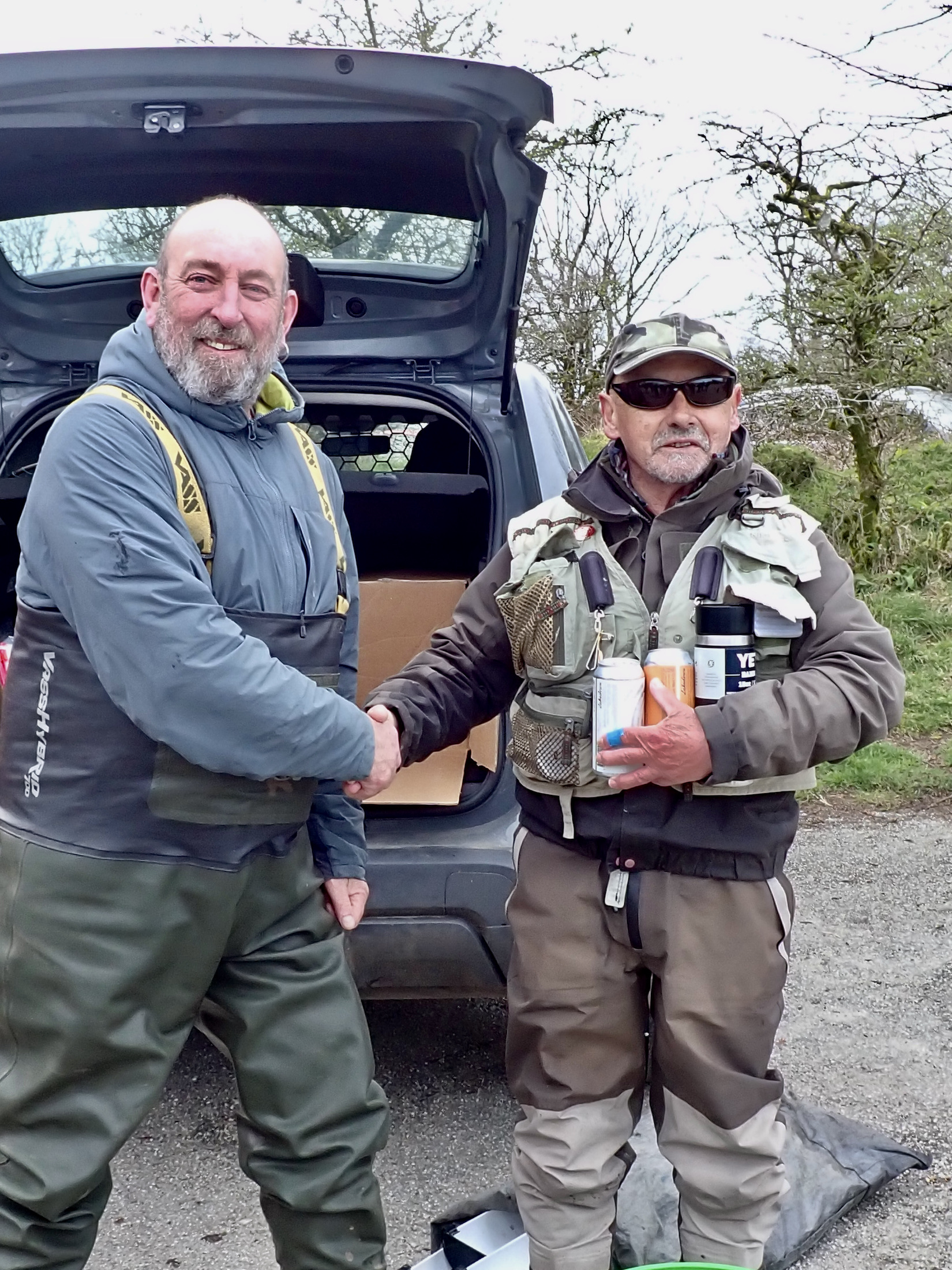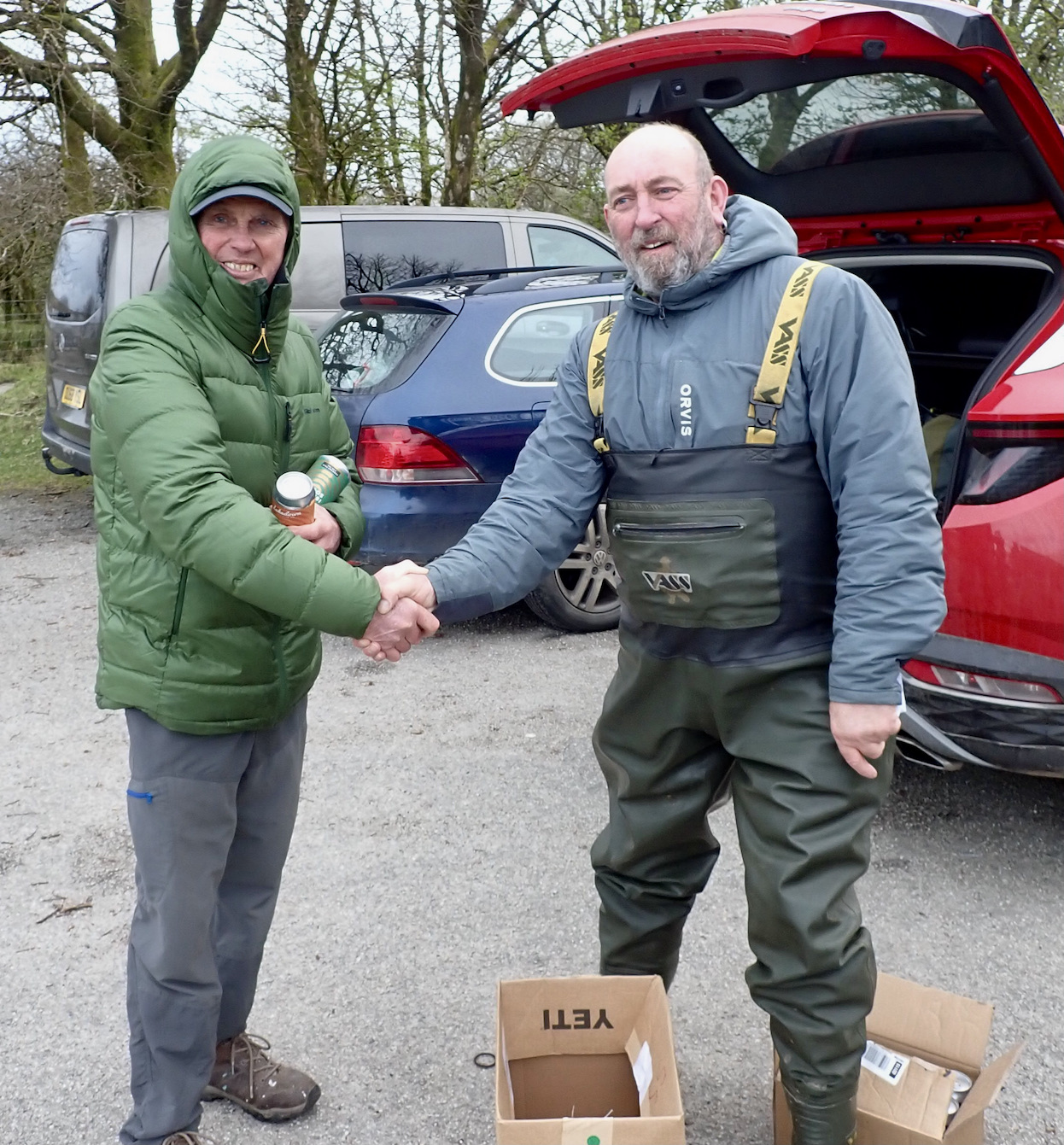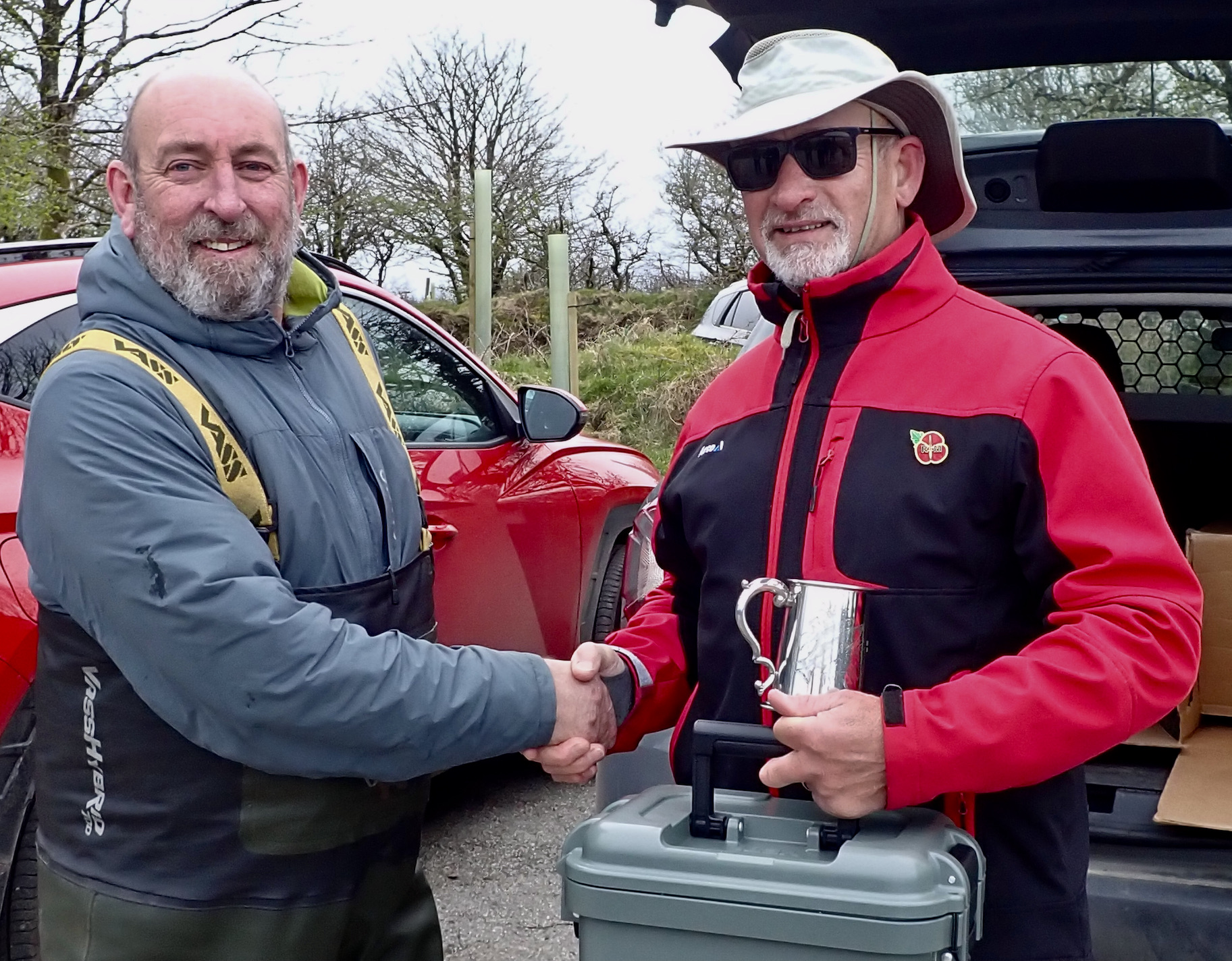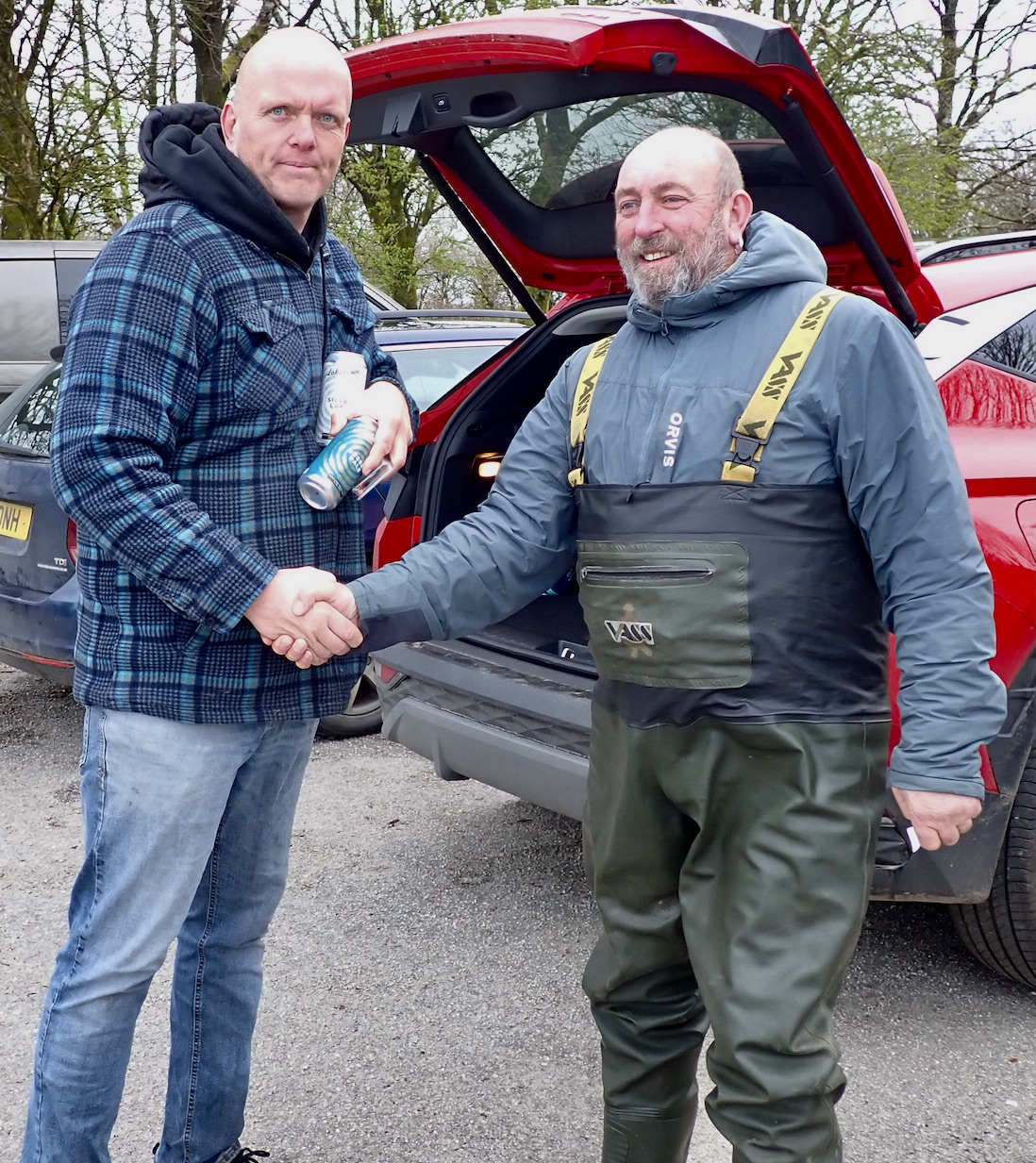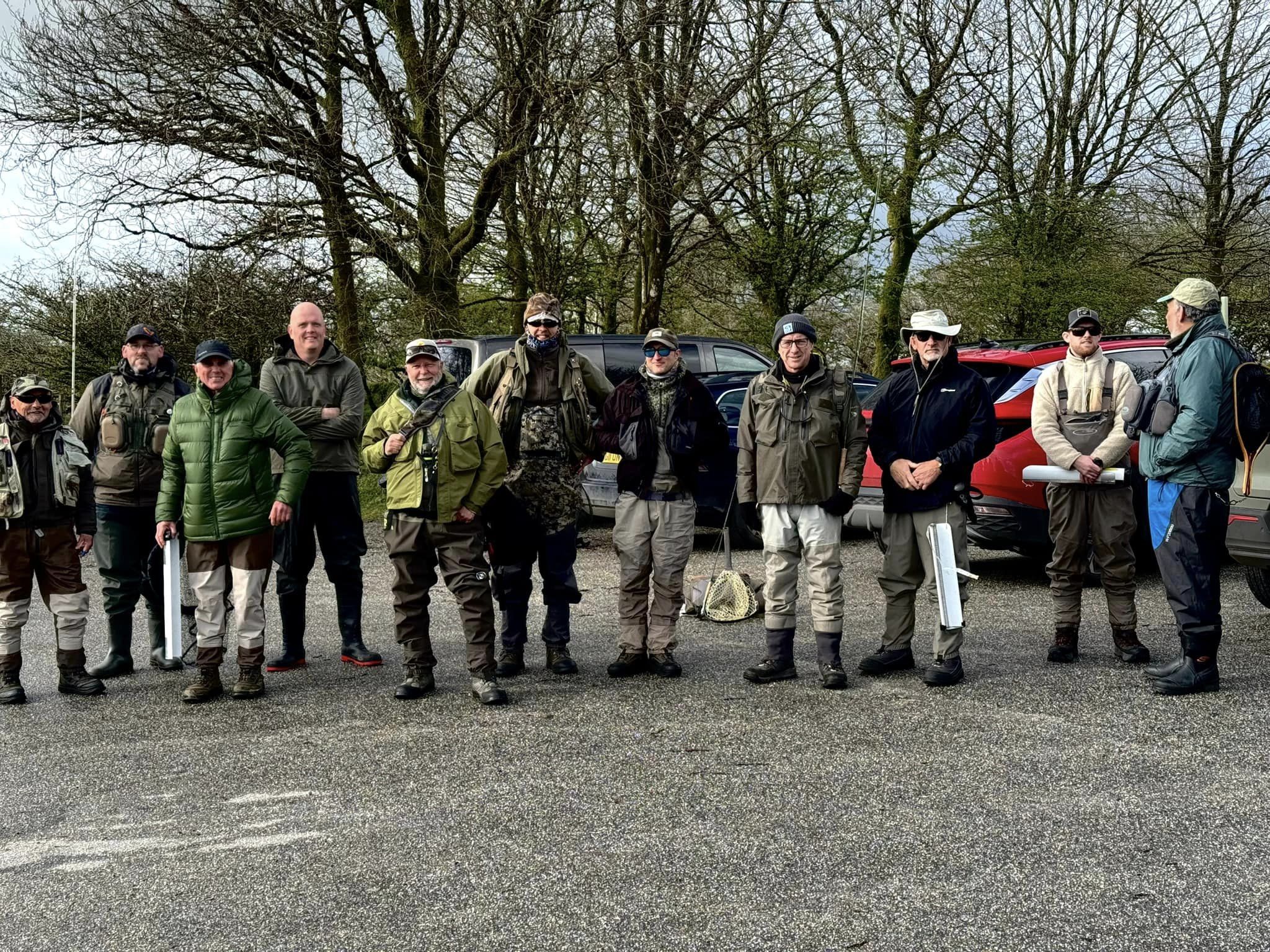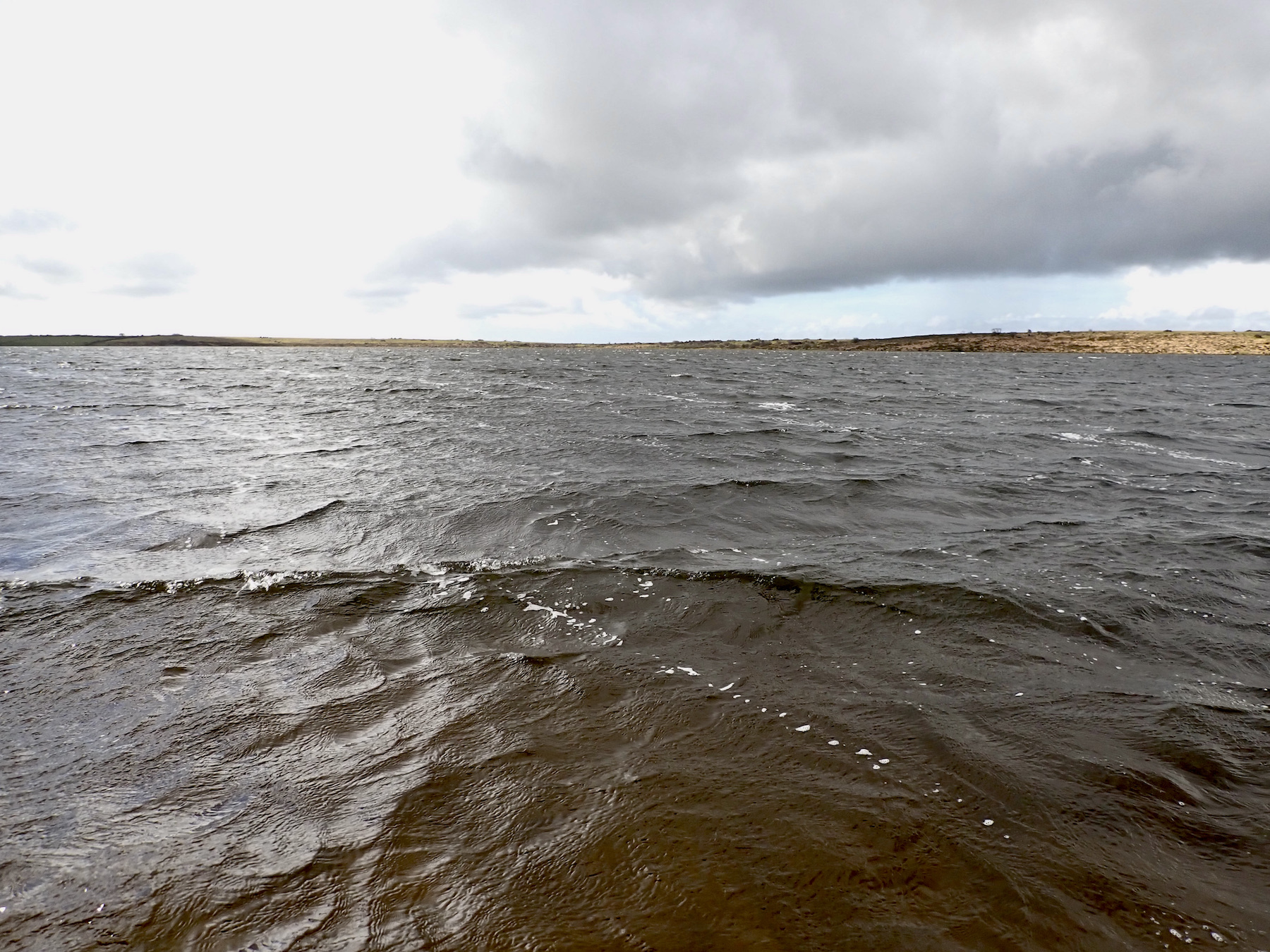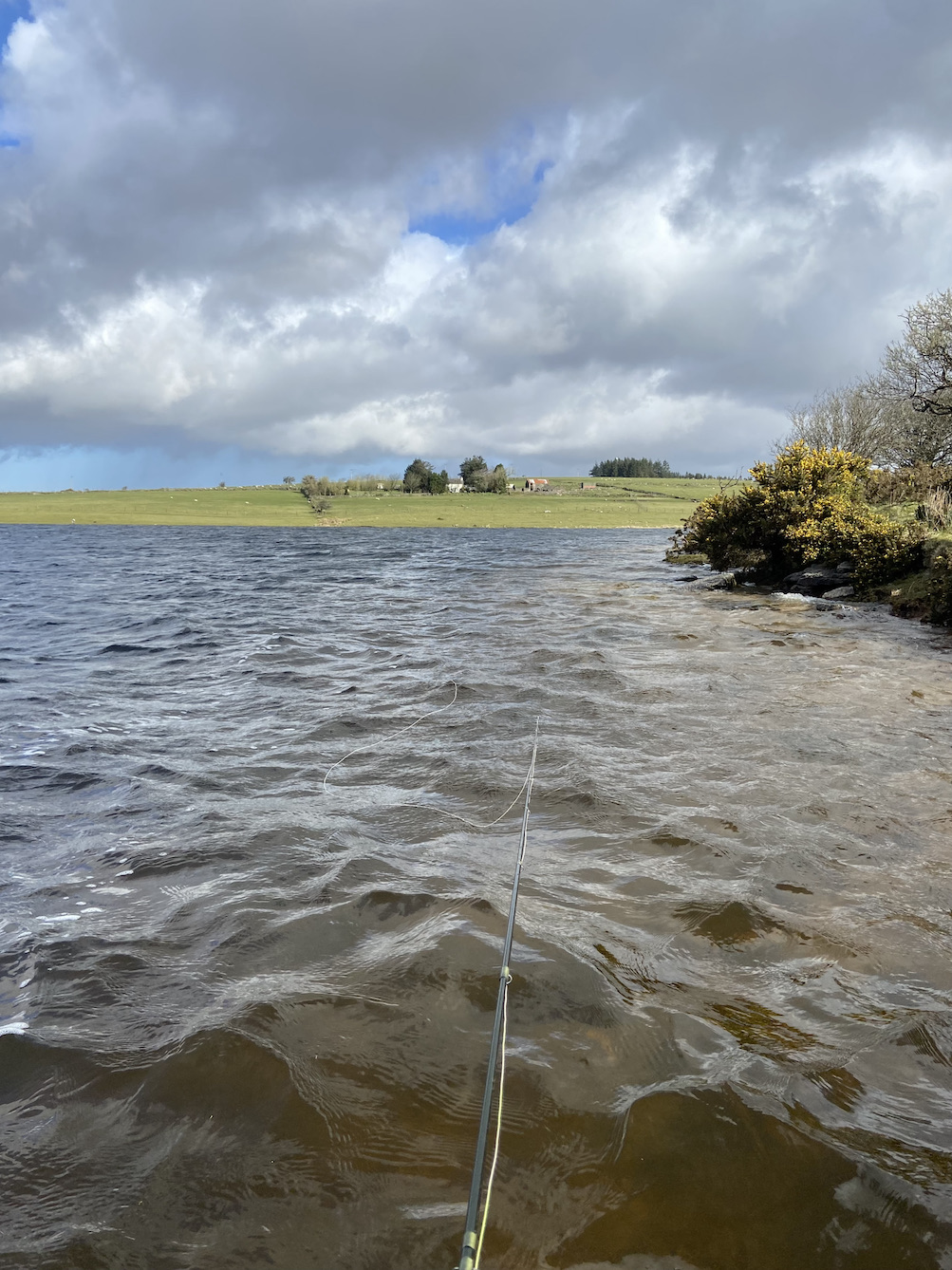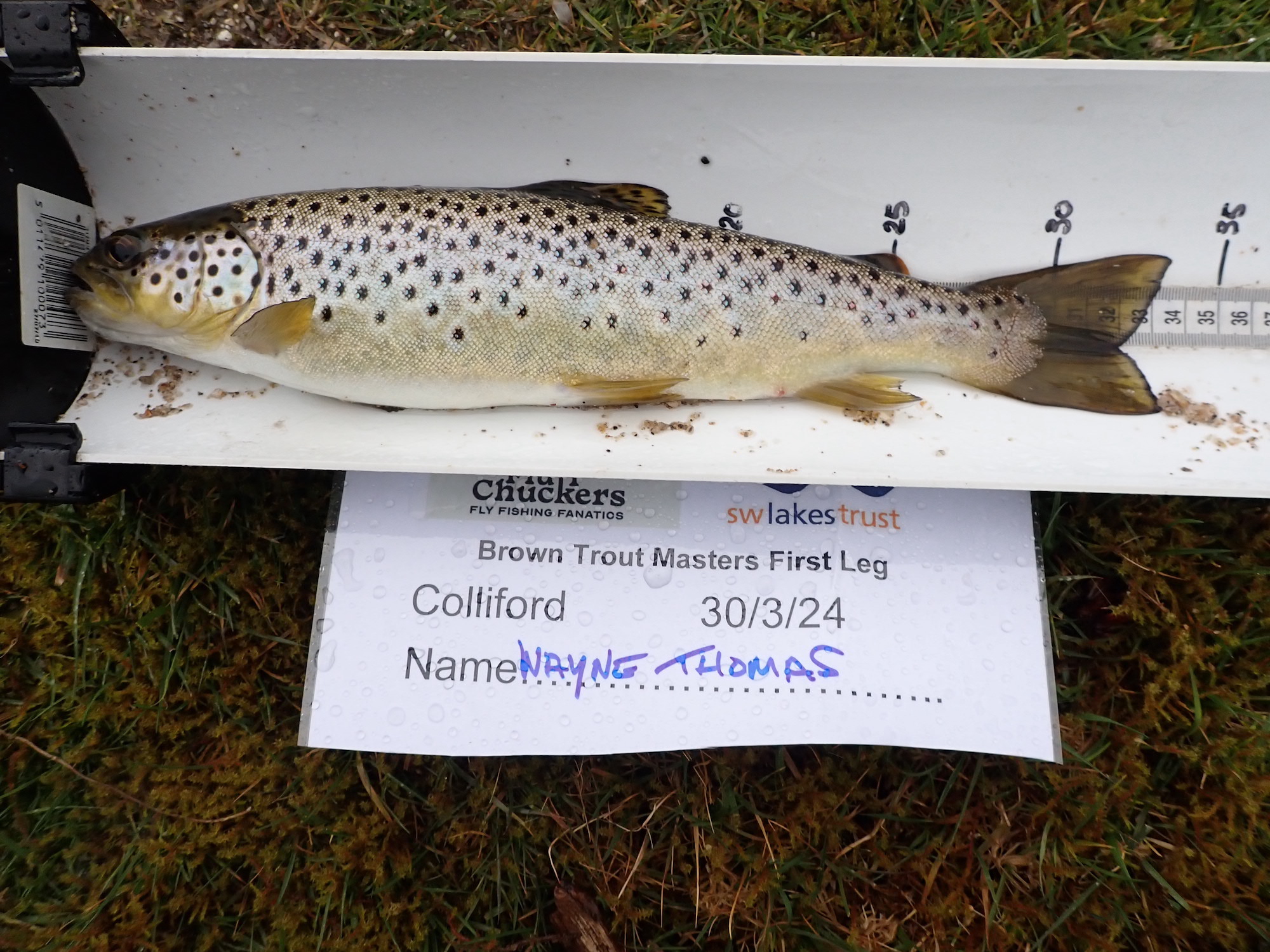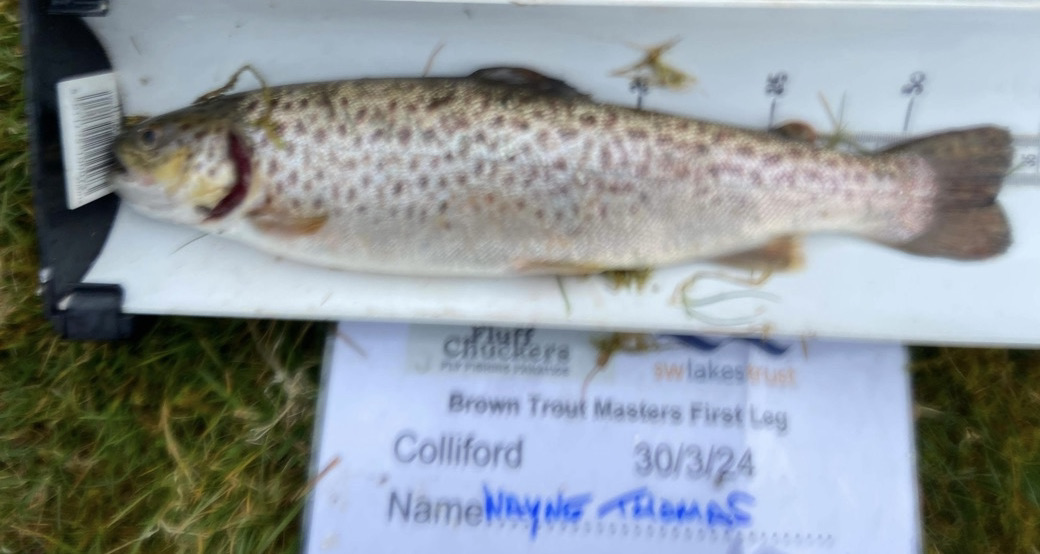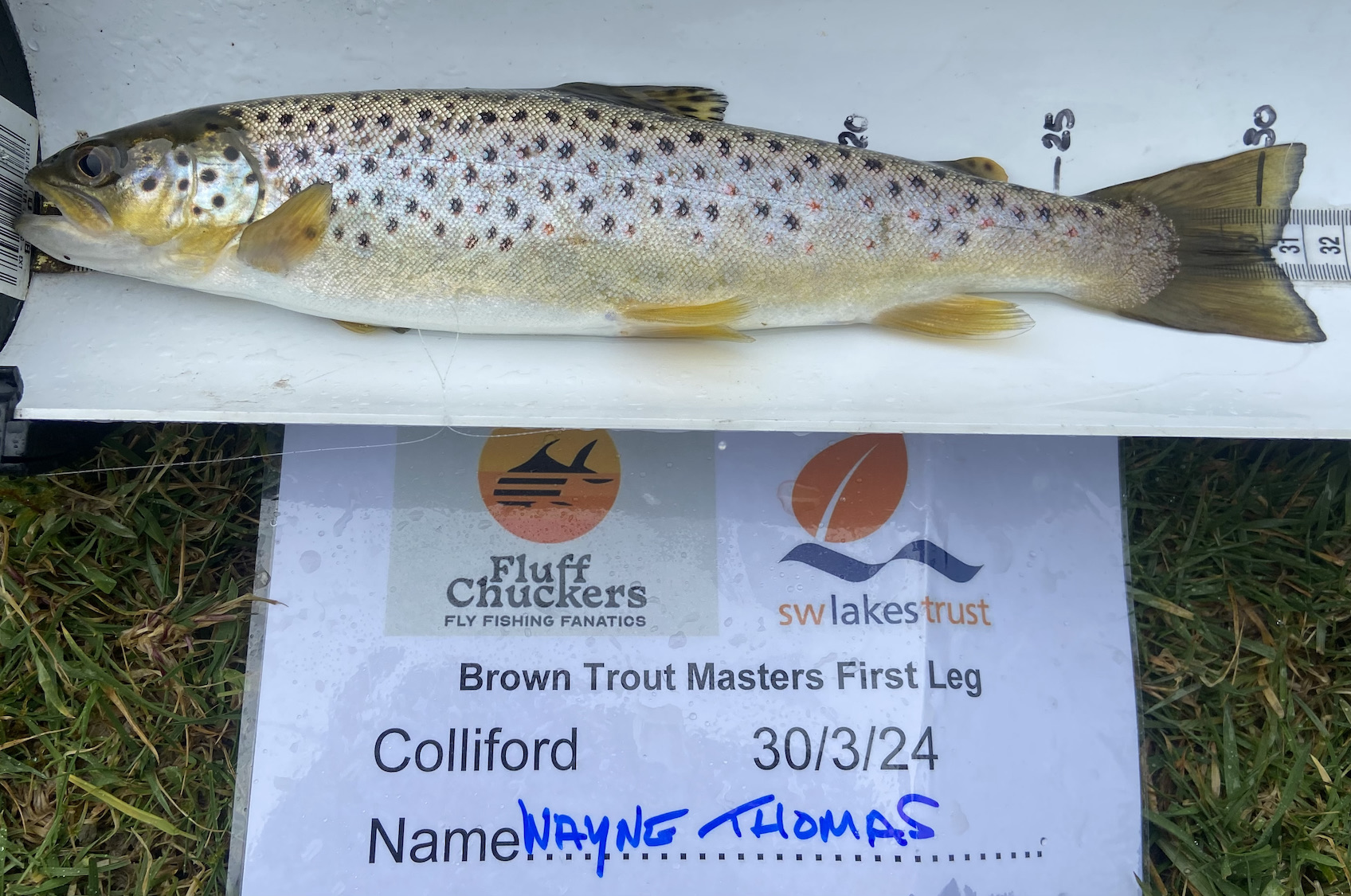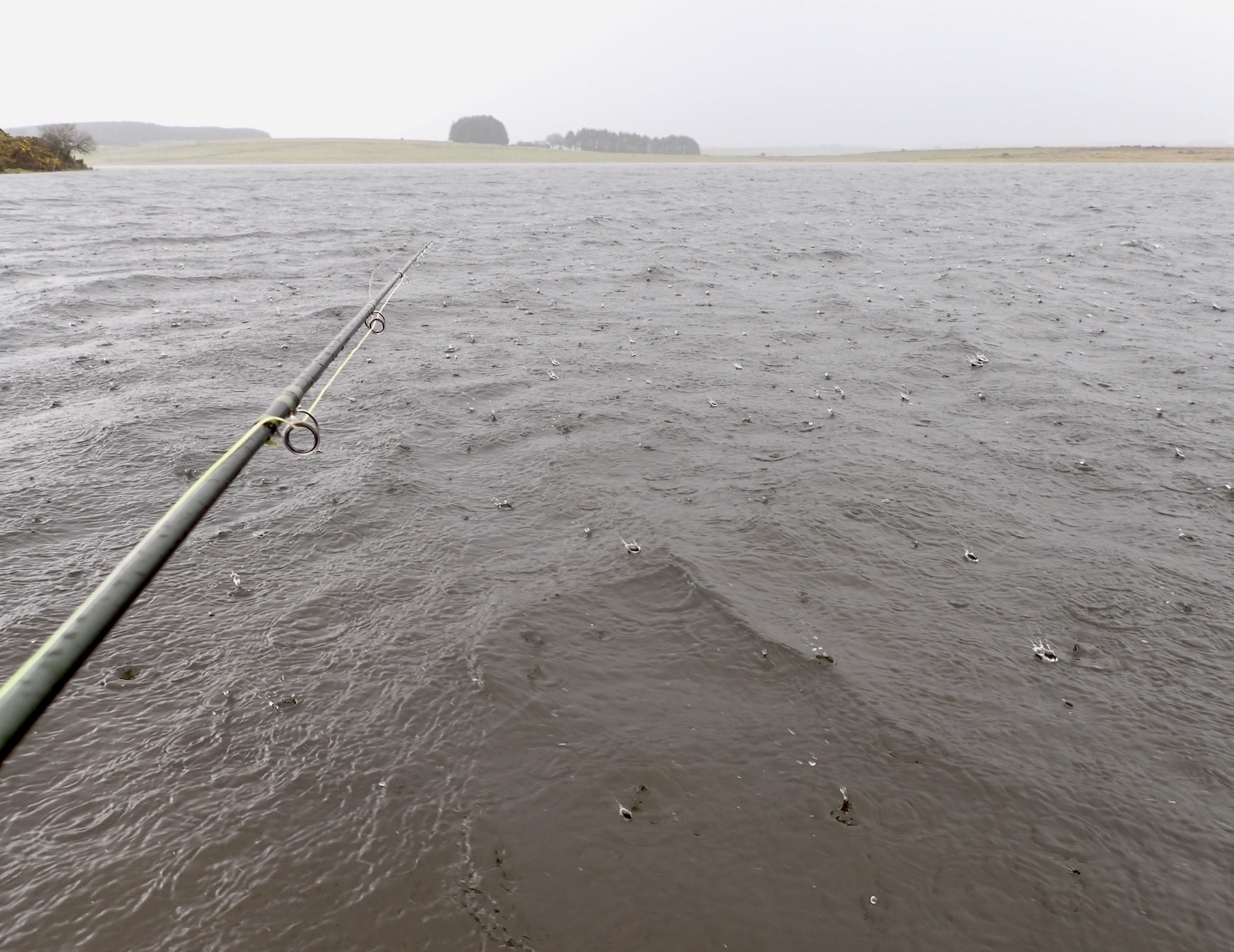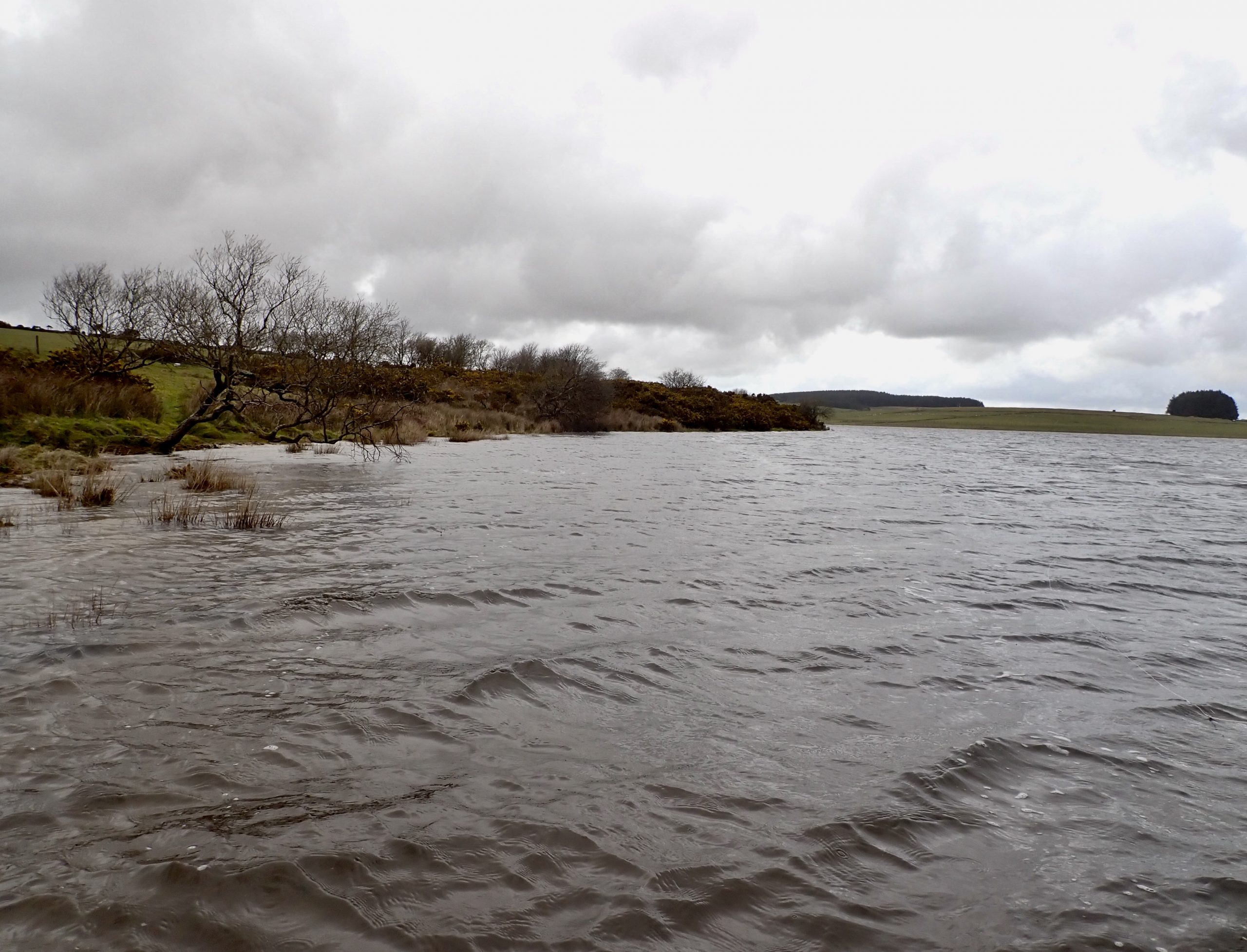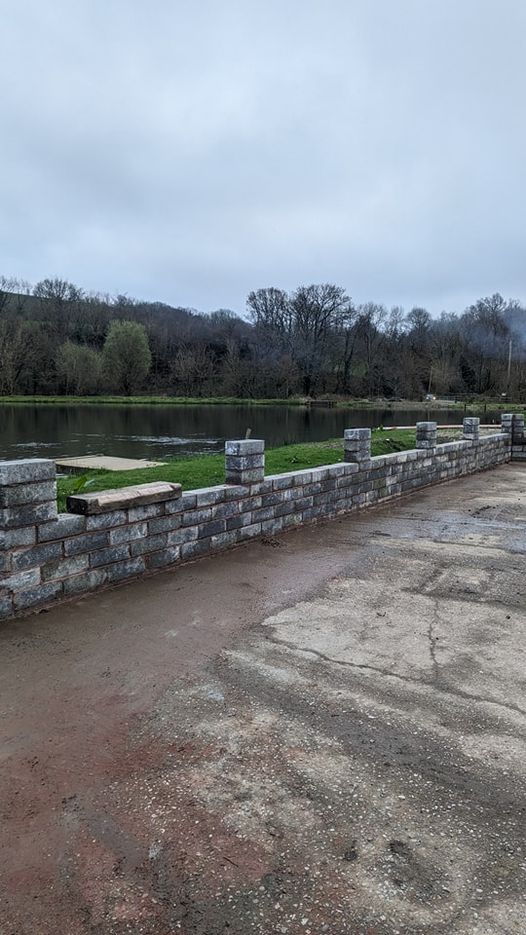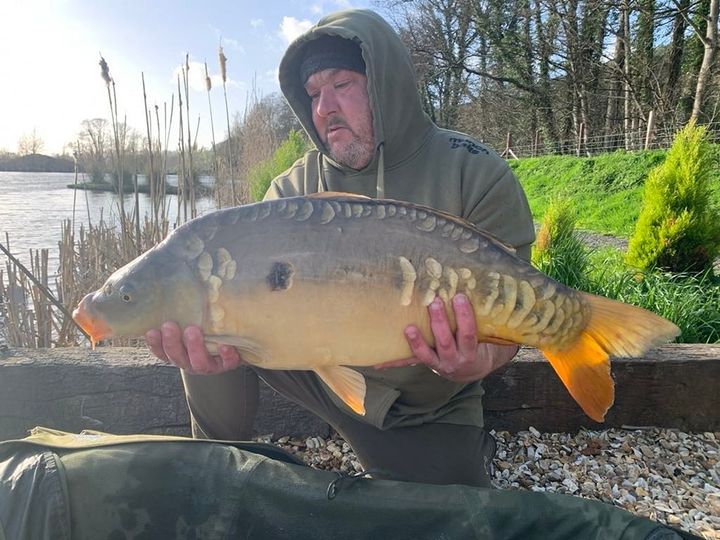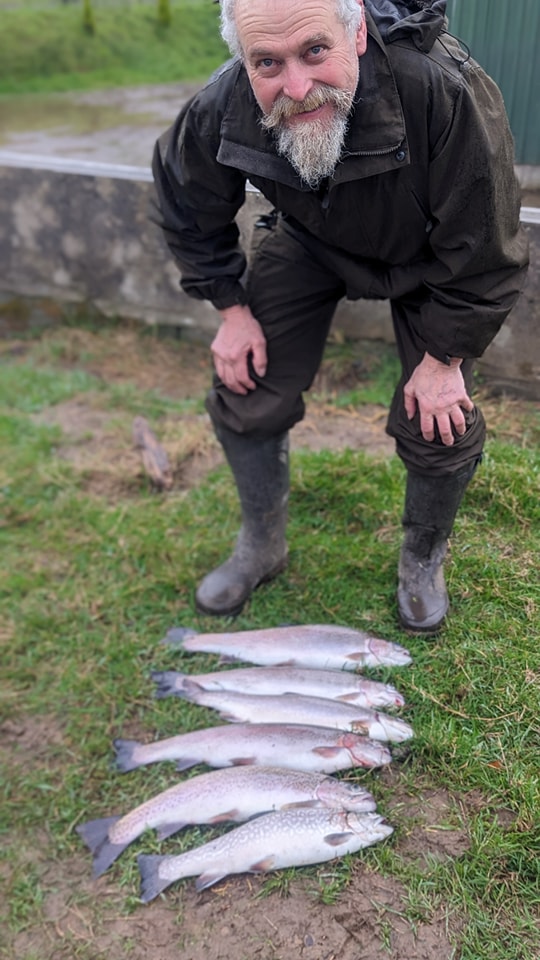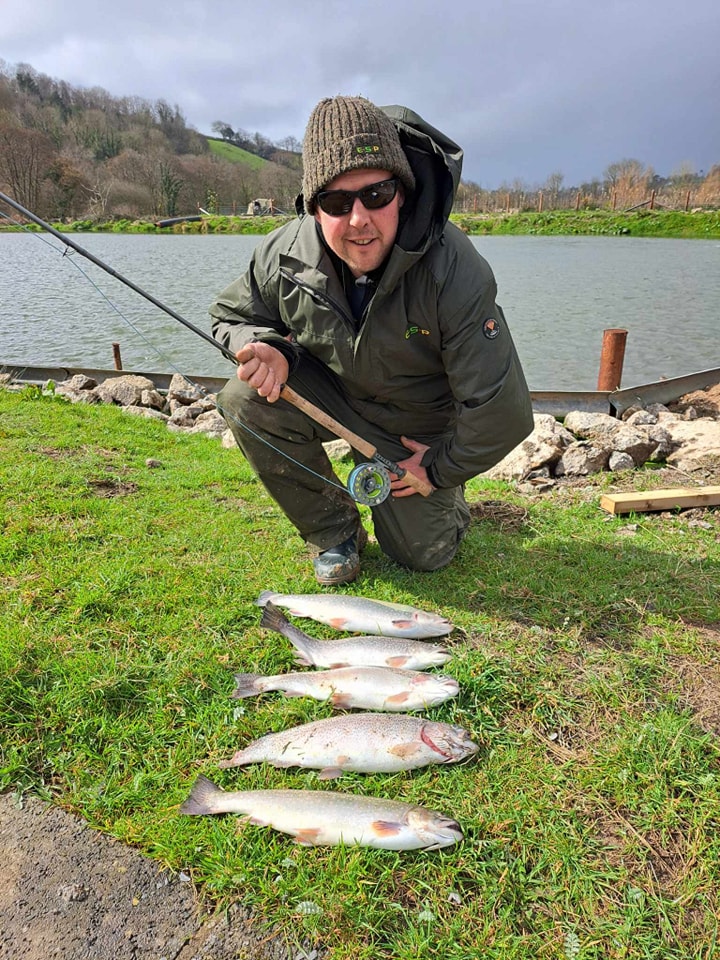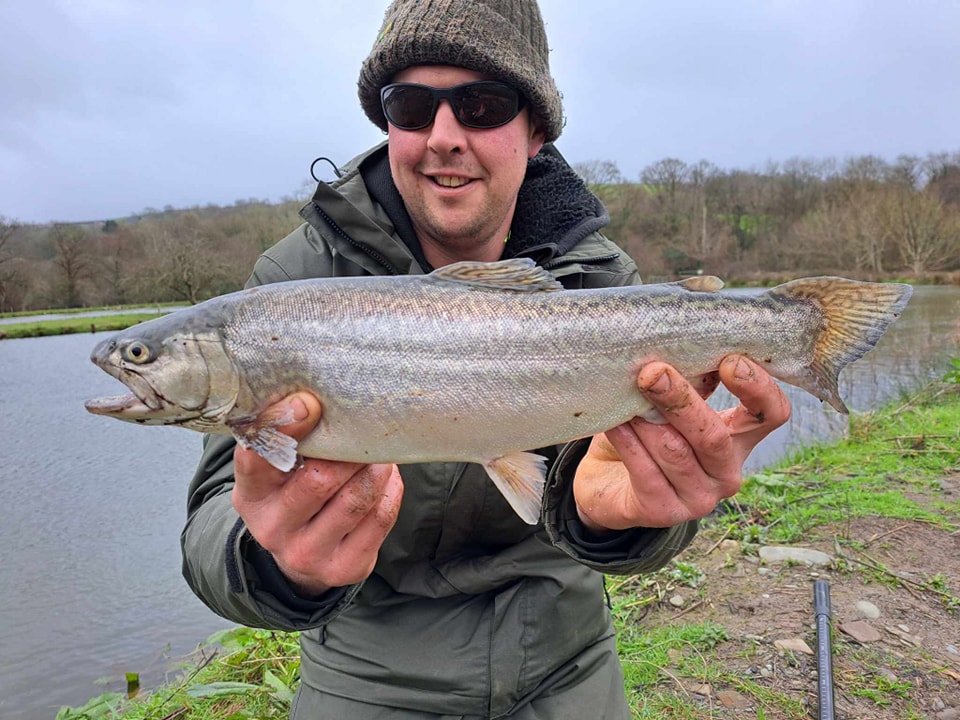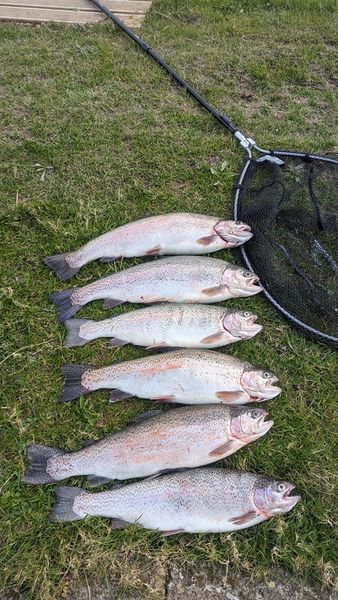June 2024
The weather continues to warm up, as have the water temperatures (in spite of unseasonably cold nights and some cooler breezes), with steady insect activity, and fish feeding well either on or just below the surface; some wet days and heavy downpours of rain have meant that most of the reservoirs are still all at top level.
Fishing:

Kennick – Anglers averaged 2.6 fish per rod over the month, with fish continuing to be well spread out around the lake. Bank anglers enjoyed slightly more success than the boats, with The Narrows, The Lawns, Boat Bank, Laployd, Smithacott and Poplar Bay banks fishing particularly well, and boats catching well in the deeper central water. Natural airborne beetles, caddis, crane-flies and hatching Damsels have meant that many fish have been feeding on or near the surface, with anglers catching well using Foam Beetles, Black Hoppers, Daddies, Sedges, Hawthorns, Claret Snafflers and Emergers on the surface, using floating lines with long leaders and a slow retrieve. Subsurface feeders have been caught on Damsel Nymphs, Buzzers, Montanas, Bloodworms and Diawl Bachs, while lure anglers caught using Cats Whiskers and Boobies. Peter Gilpin (from Newton Abbot) caught ten rainbows to 3lb 9oz in one session, mainly on Black and Green Boobies; Ben Garnett (from Kenn) caught a 2lb 9oz rainbow while fishing in the early evening, casting to a feeding fish in Boat Bay, using a Diawl Bach; Alex Jackson caught a bag of four fish to 2lb 8oz, casting to topping fish along the West Bank. The annual Peninsula Classic bank competition, sponsored this year by Turralls, was won by Alex Venn, catching a bag of seven fish, weighing in at 13lb 12oz; Alex Jackson (from Australia) took second place with five fish, weighing 9lb 12oz; John Hern (from Exeter) caught the biggest fish of the day – a rainbow of 2lb 8oz.
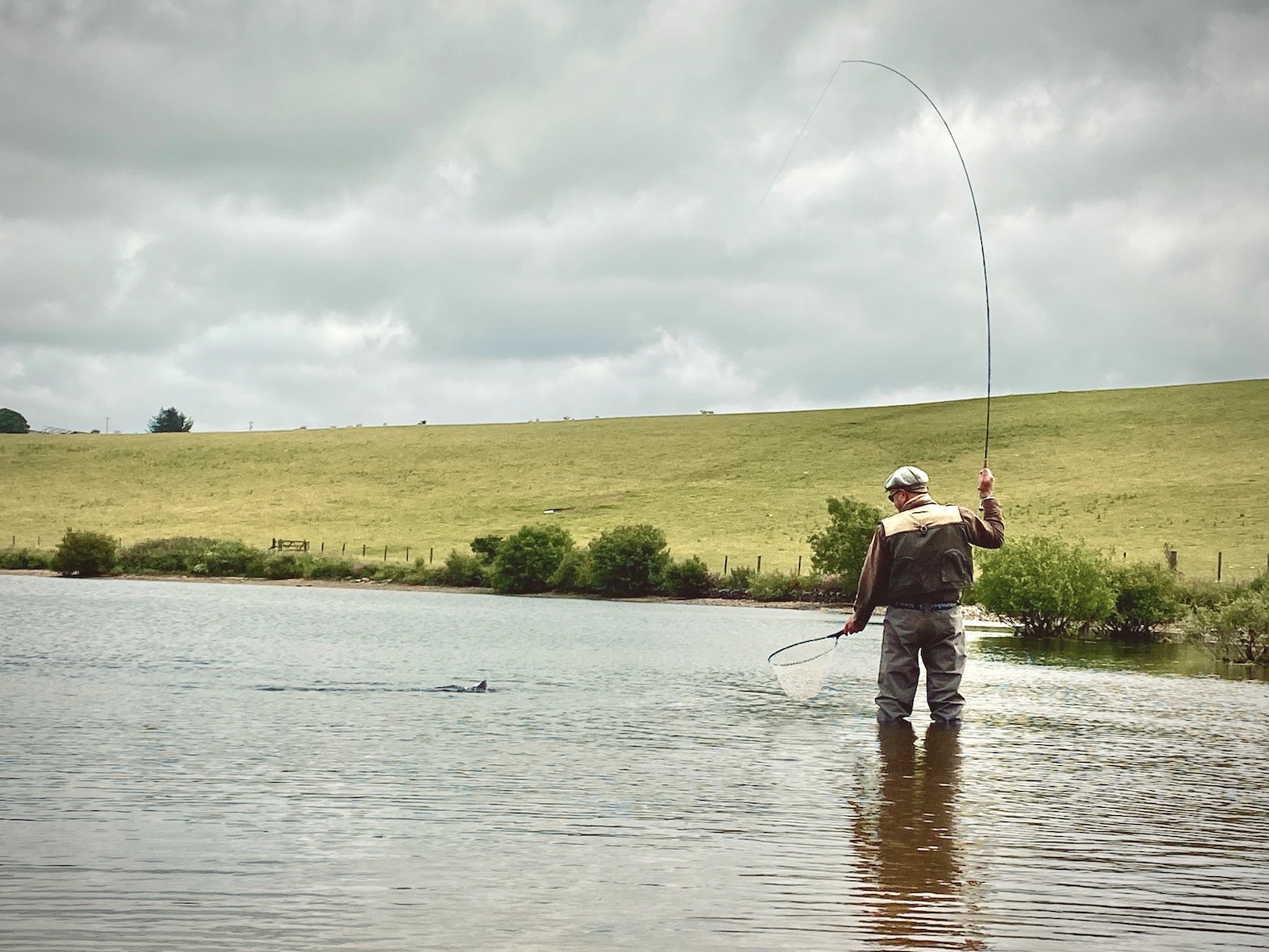
Siblyback – This fishery continued to provide some excellent fishing, with anglers averaging 4.7 fish per rod, with the North Bank, Two Meadows, Stocky Bay and Crylla Bay producing the most consistent sport (although fish have been caught all over the lake, and seem to be well spread out). Plenty of air-born beetles and hatching buzzers meant that the fish were eager to look up to the surface to feed, with Beetles, Hawthorns, Sedges, Coch-y-bondhus and Hoppers all catching well. Deeper feeding fish were caught on a selection of nymph patterns (Damsel Nymphs, Gold Head Hares Ears, Montanas and Diawl Bachs) and lures (Boobies, Tadpoles, Orange Blobs, Orange Baby Dolls and Vivas). Ron Wilday (from Liskeard) had some excellent sessions, the best producing a bag of twelve rainbows (to 2lb) and one brown while fishing one morning in Stocky Bay, with fish feeding close to the surface.
Burrator – Anglers averaged 2.34 fish per rod over the month, with Longstone, Bennetts, Sheepstor and Pig Trough producing the best sport. Sedge hatches produced the best surface feeding activity, when fish were caught using Black Gnats, Daddy Longlegs, Hoppers (black and red) and Beetle imitations. Fish could, however, be caught at all depths, when Montanas, Crunchers, Damsel Nymphs, Orange Blobs and Tadpoles all succeeded in catching fish. Roger Prout (from Pensilva) caught a bag of ten rainbows in a session of very mixed weather conditions, using a floating line with a midge-tip, either with fast strips using a Cormorant, or a static line with Buzzers and Beetles. Allan Lawson (from Plymouth) caught a bag of five rainbows to 1lb 12oz and a brown using both a floater and slow-sink line; Andy Lawson (from Plymouth) caught a bag of six rainbow to 1lb 8oz, either stripping white lures on an intermediate line, or using dry Black Caddis and Beetle patterns fished very slowly.
Stithians – The lake continued to produce some excellent sport, with anglers averaging 3.6 fish per rod, and fish still well spread out around the lake (Pipe Bay, Yellowort, Goonlaze, Pipe Bay and Sailing Club Bank all received regular mentions on catch returns). Buzzer hatches and air-born beetles meant that there was plenty of surface action, with dry Daddies, Hawthorns, Hoppers, Black Gnats, Beetle patterns and buzzer emergers all catching well. Damsel Nymphs, Hares Ears, Diawl Bachs and Black and Peacock spiders all caught deeper feeders, mainly fished on a floating line.
Fernworthy – Most of the fish caught this month have been on or near the surface, either on dry patterns (Beetles, Hoppers, Bobs Bits, Sedgehogs and Black Gnats), or nymphs (Diawl Bach, Pheasant Tail and Spiders) and larger patterns (Soldier Palmer, Invicta and Bibio) fished just under the surface and cast to feeding fish. The most productive areas included Brownhills, Thornworthy, Permit Hut bank and near the dam.

Colliford – The fishing continued to improve this month, with rods averaging five fish per angler, with the preferred locations including Fishery Hut bank, Lords Waste and the banks by the dam. The browns were looking to the surface to feed on beetles blown onto the water, and floating lines with long leaders produced the best results. Coch-y-bondus and foam beetle patterns, along with Sedges and Hoppers, caught well on the surface, otherwise pulled lure patterns (Soldier Palmer, Zonker, Black Mini muddler, Bloodworm and Bushy Blob) fished just under the surface attracted fish. Included in the nice bags caught in the month were Chris Tillyard (from Fraddon), catching eleven browns to 1lb 8oz in an evening session, using Black and Peacock spiders and Hoppers; Dean Boucher (from Gunnislake) caught eleven browns, all on pulled wets in one session, and twelve fish to 15” on Beetles, Hoppers and slow-retrieve team of nymphs in another; Paul Mockford (from St Wenn) caught eight browns to 1lb 8oz on beetle patterns.
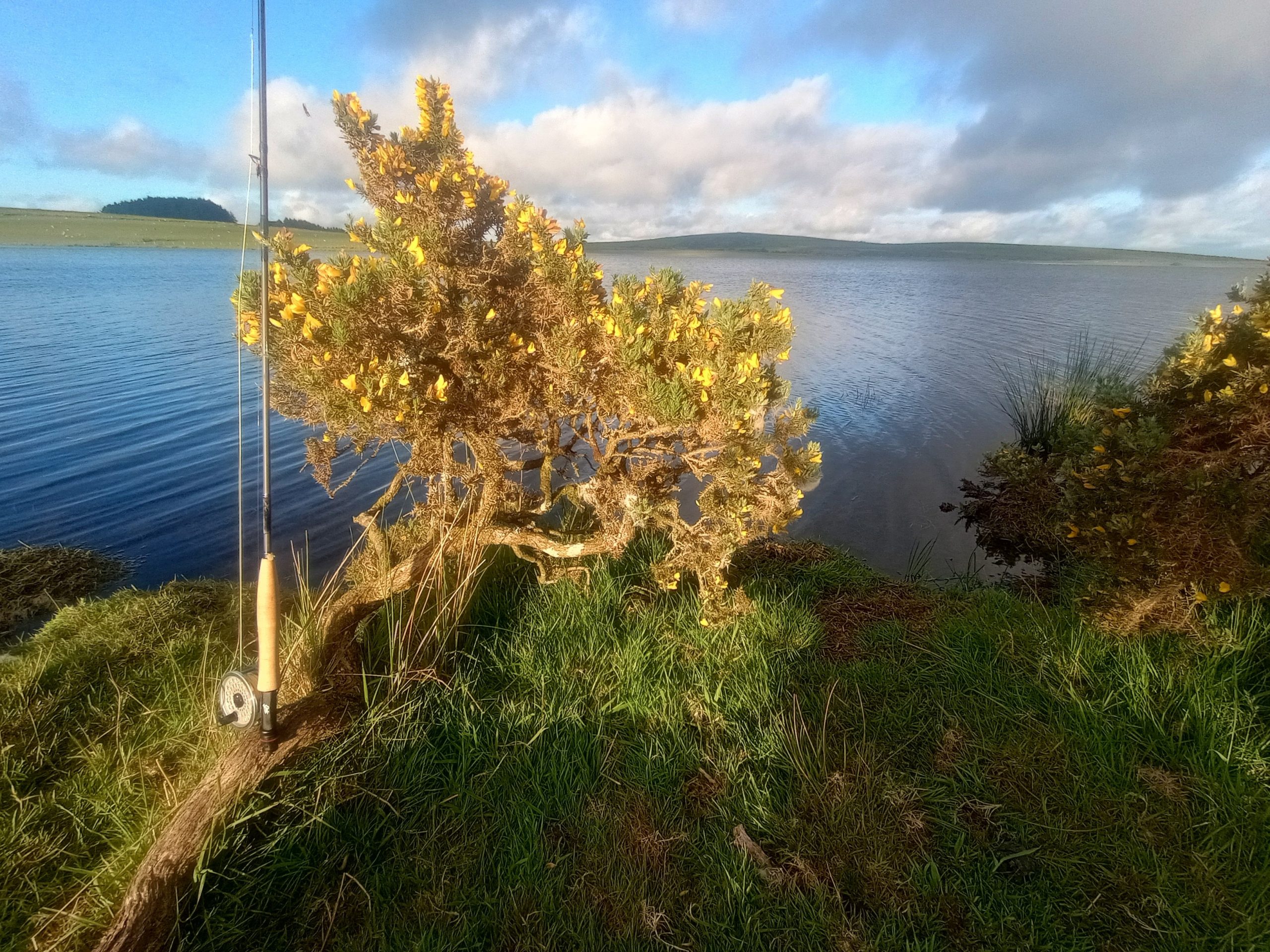
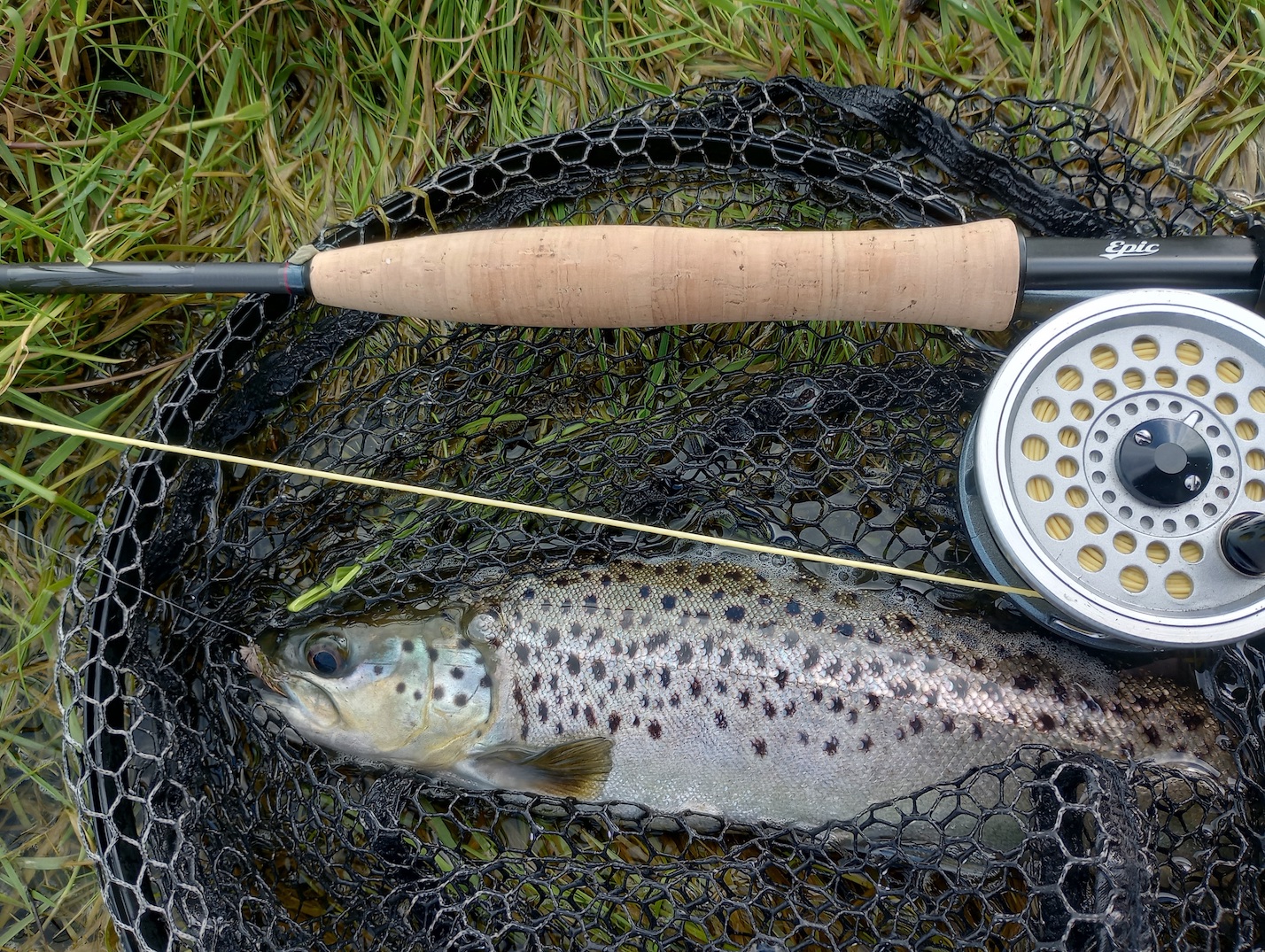
Roadford – Floating lines with long leaders proved to be the best combination, with fish taking a variety of patterns, including Humungous, Sedgehog, Buzzers, Damsel nymphs, as well as the more traditional Coachman and Whickhams Fancy. Fish were well spread out, with Wortha, Shop Inlet and Grinnacombe all proving popular. Rodeny Wevill (from Lifton) caught four browns to 2lb, using a floating line with a long leader and fishing slow and deep, with the best sport in the last hour before sunset.
Please see the Trust’s website (www.swlakestrust.org.uk/trout-fishing) for more information on buying tickets, boat availability and booking, and forthcoming events. The Trust, in conjunction with Fluff Chuckers, will be running a Brown Trout Masters competition this season, to be held over three dates at Colliford, Fernworthy and Roadford – please see the website for more information.
Chris Hall (June 2024)
ENDS

